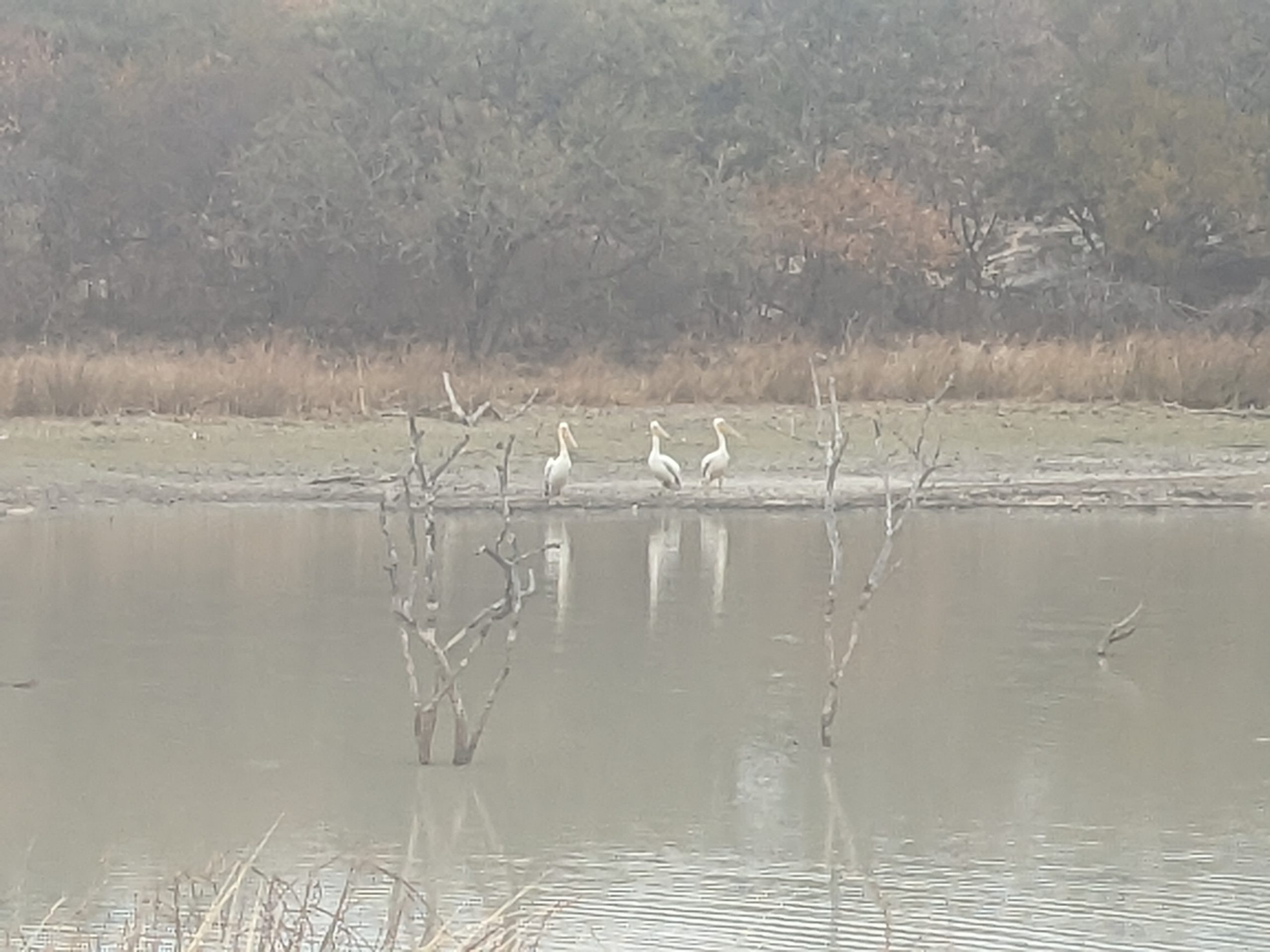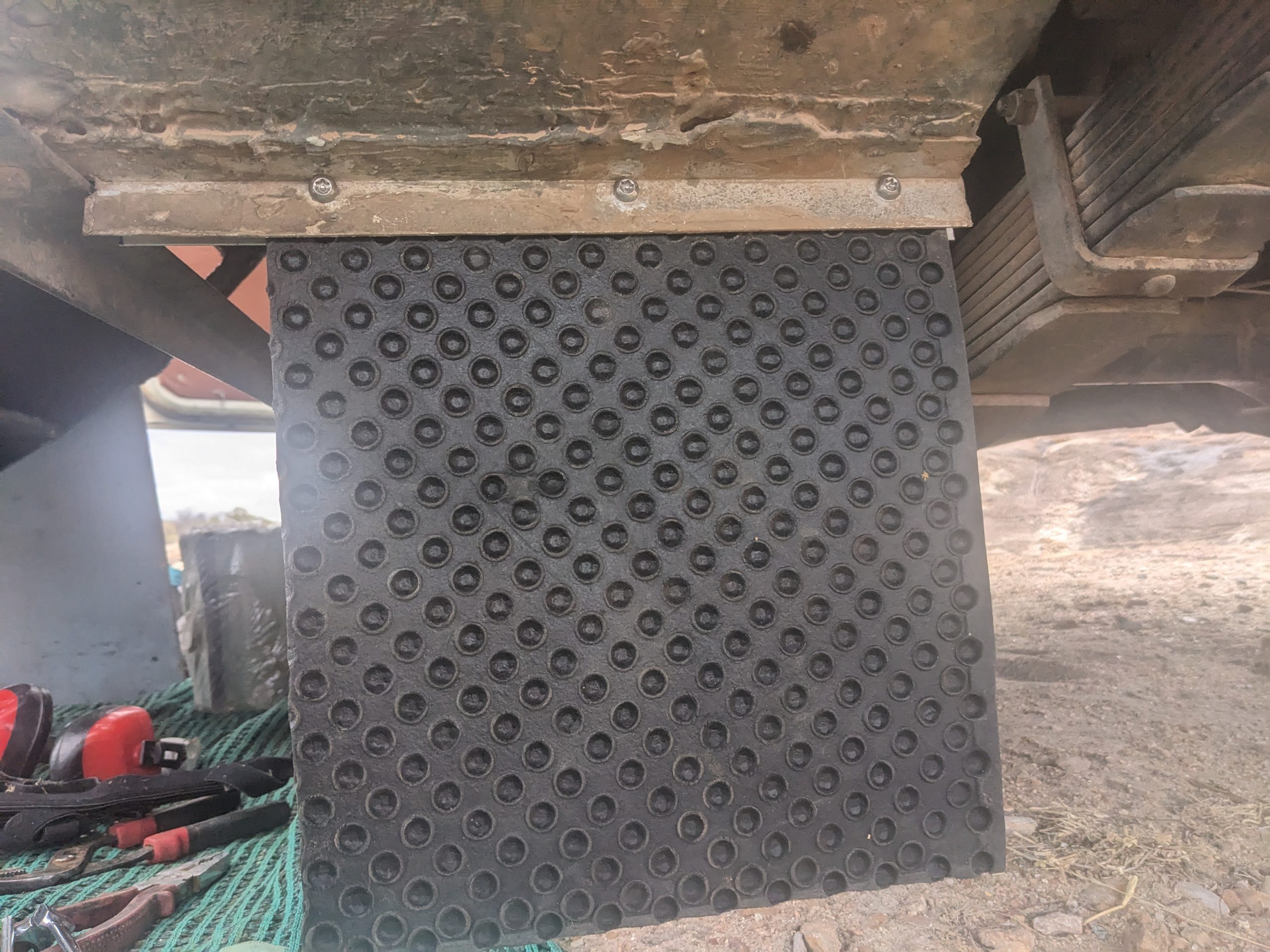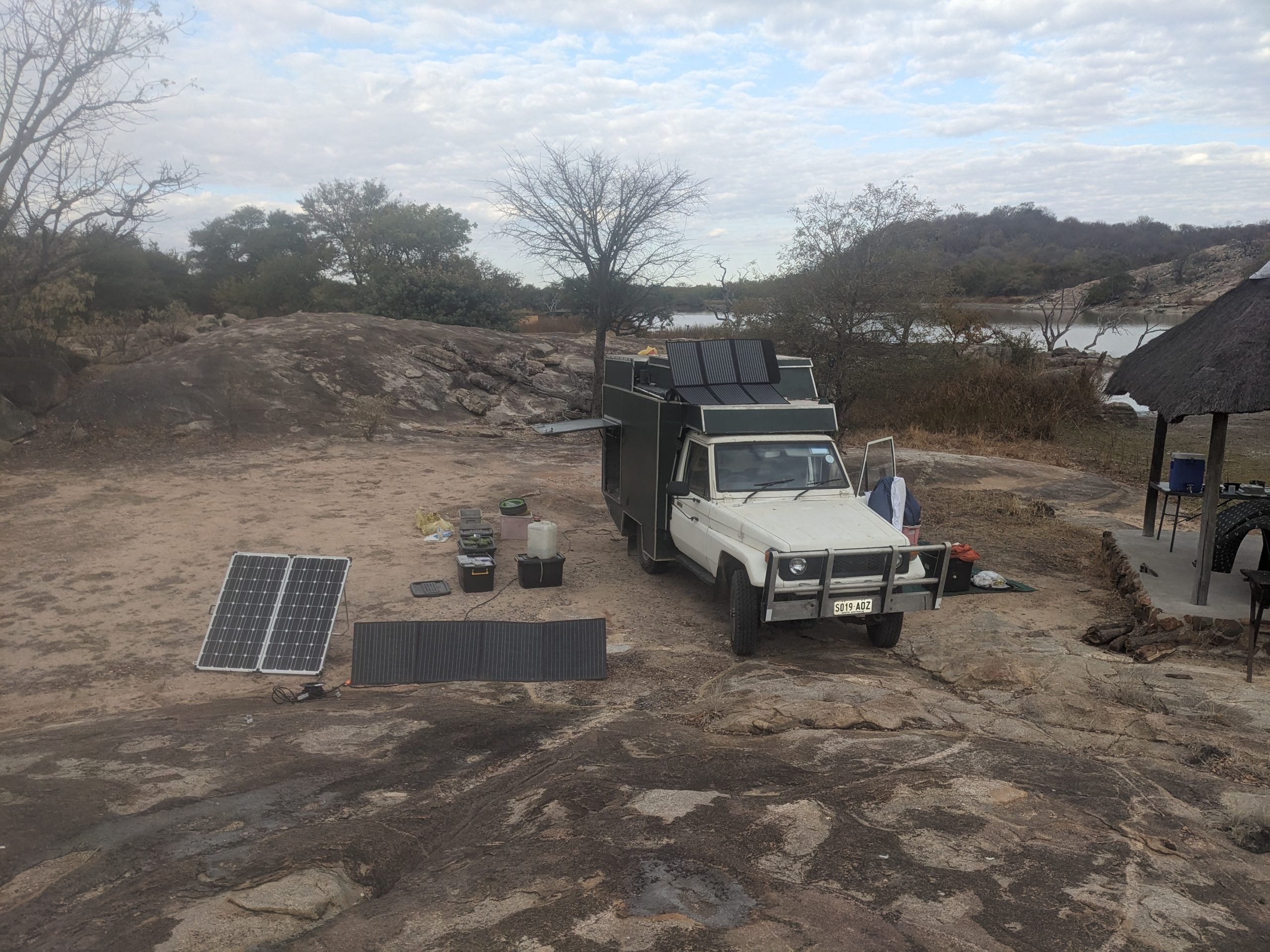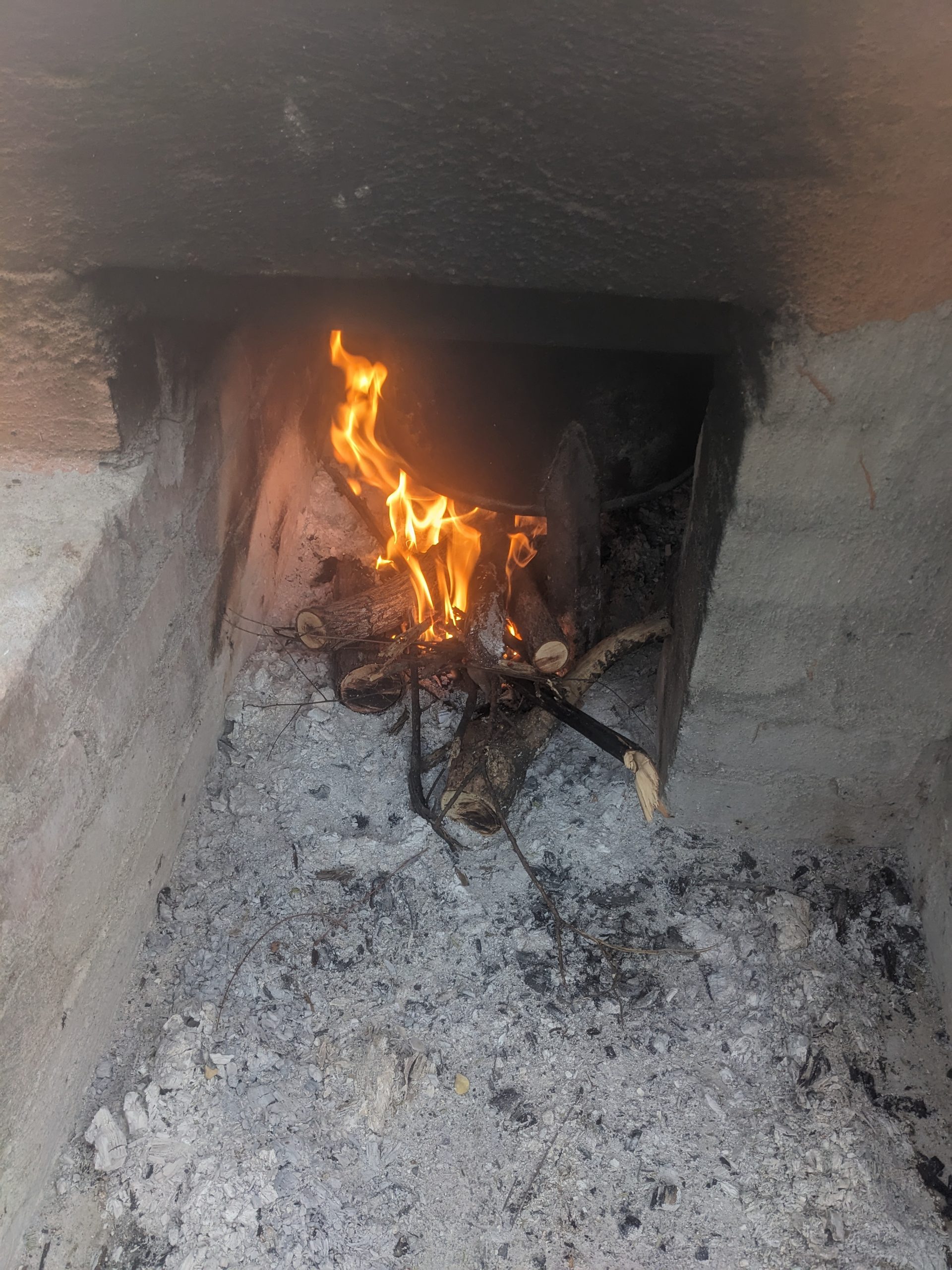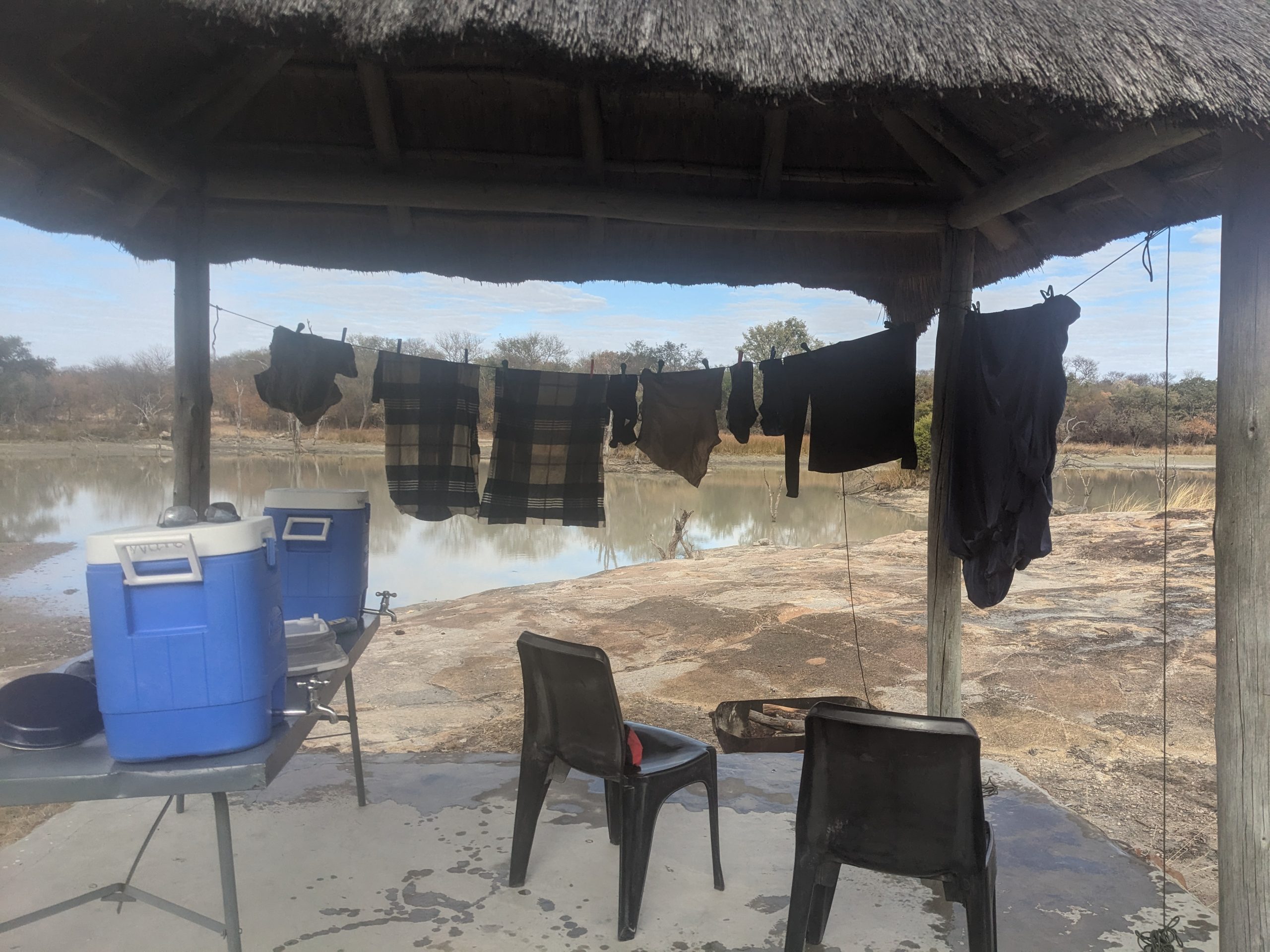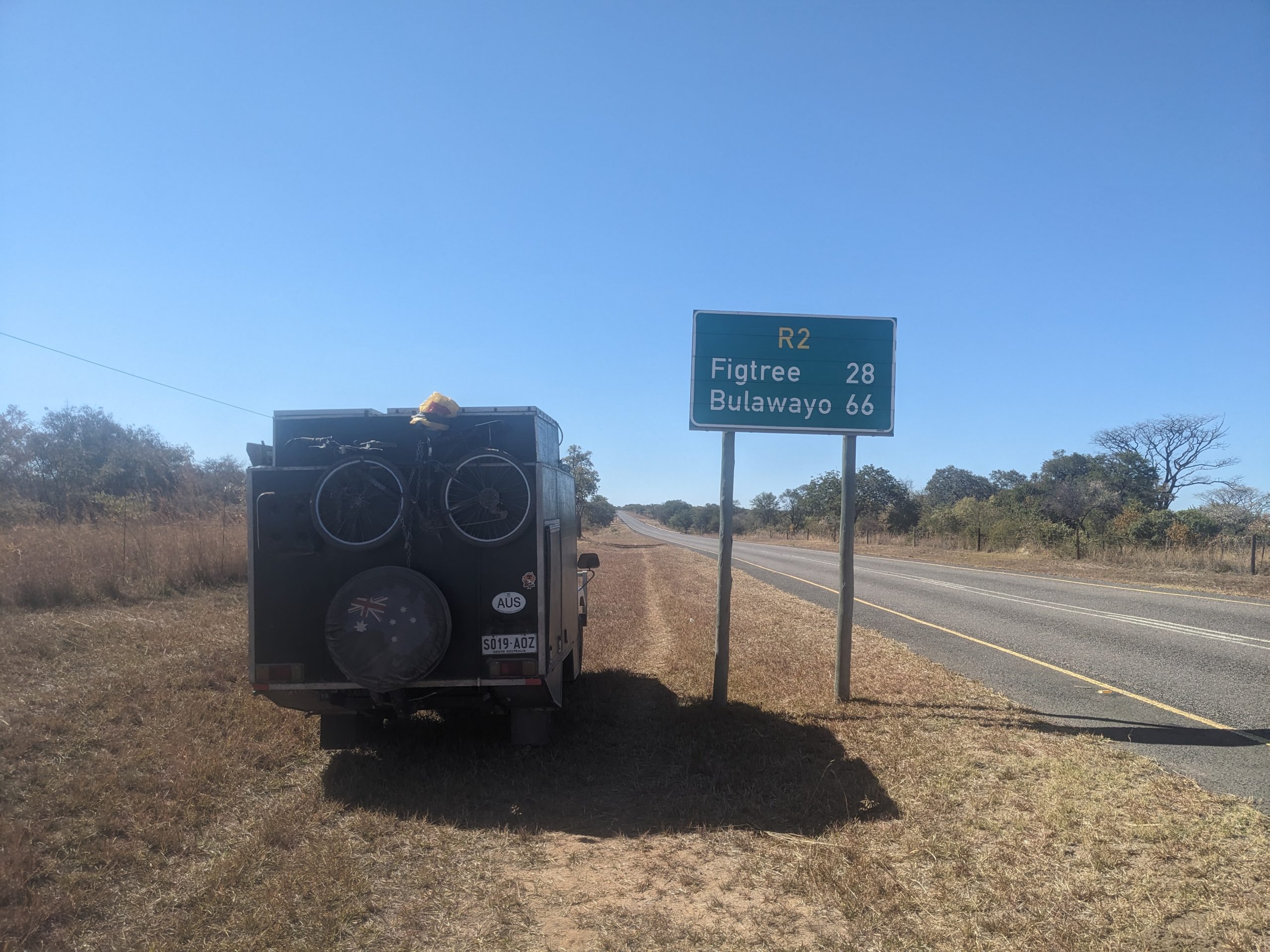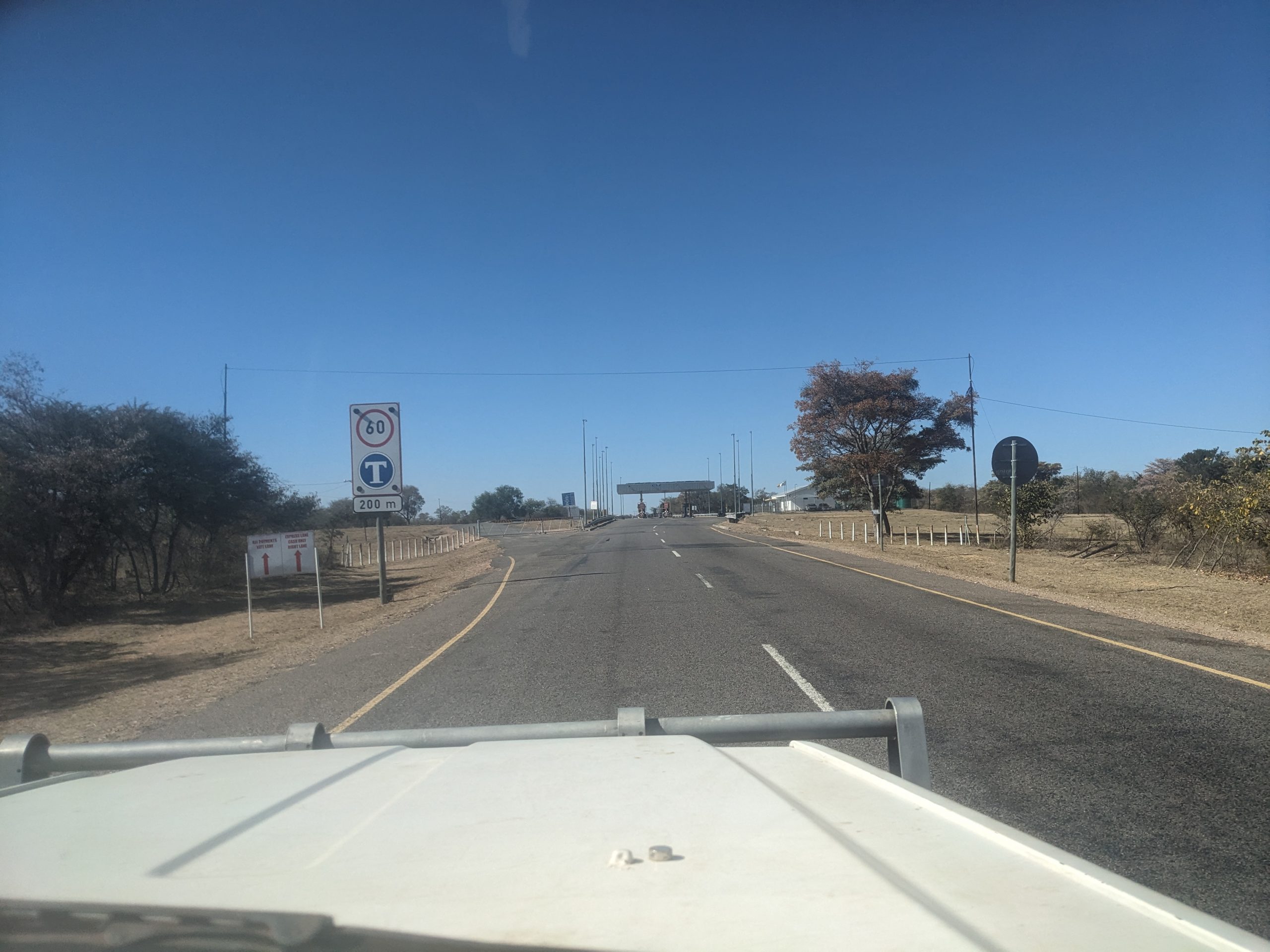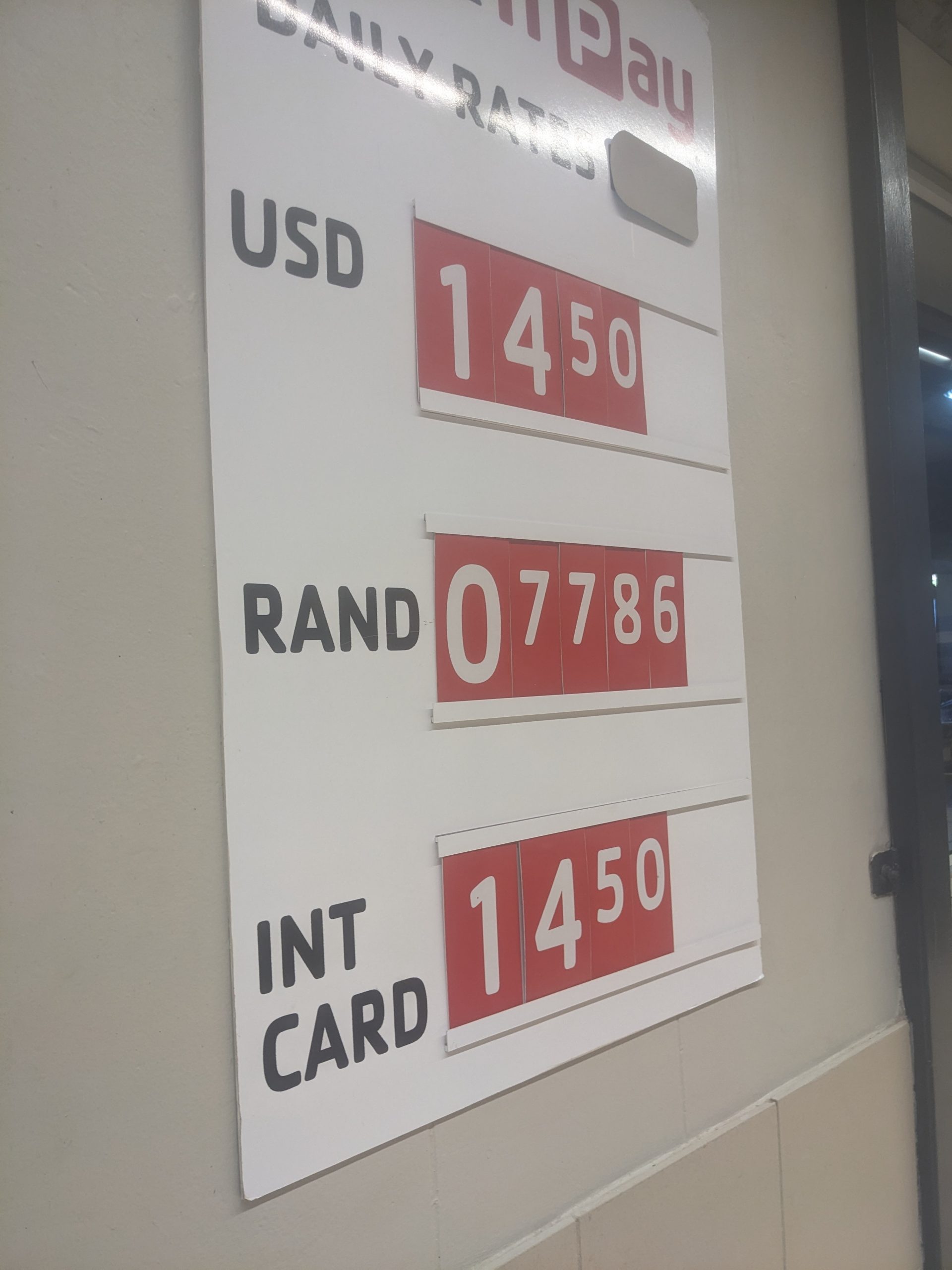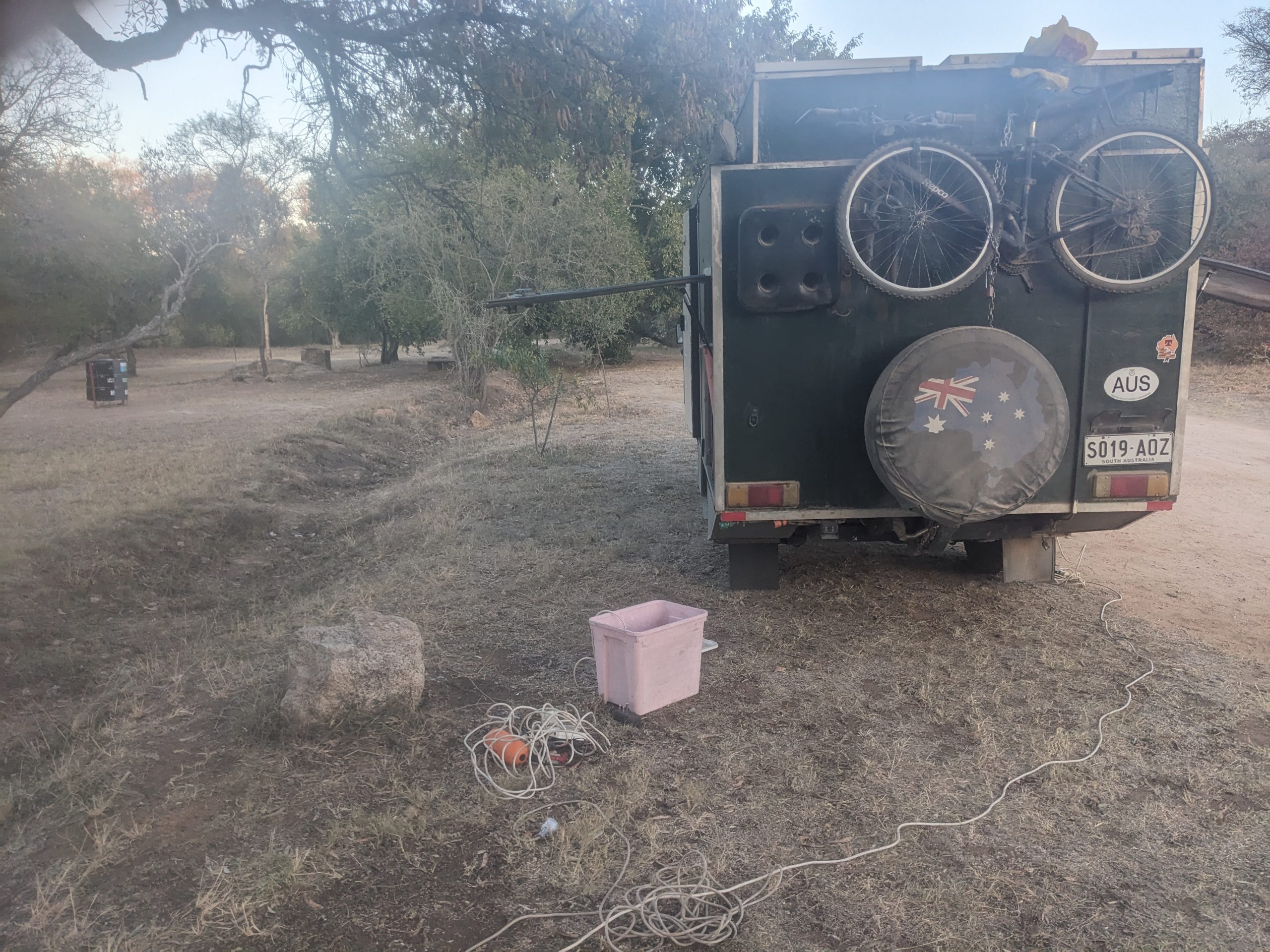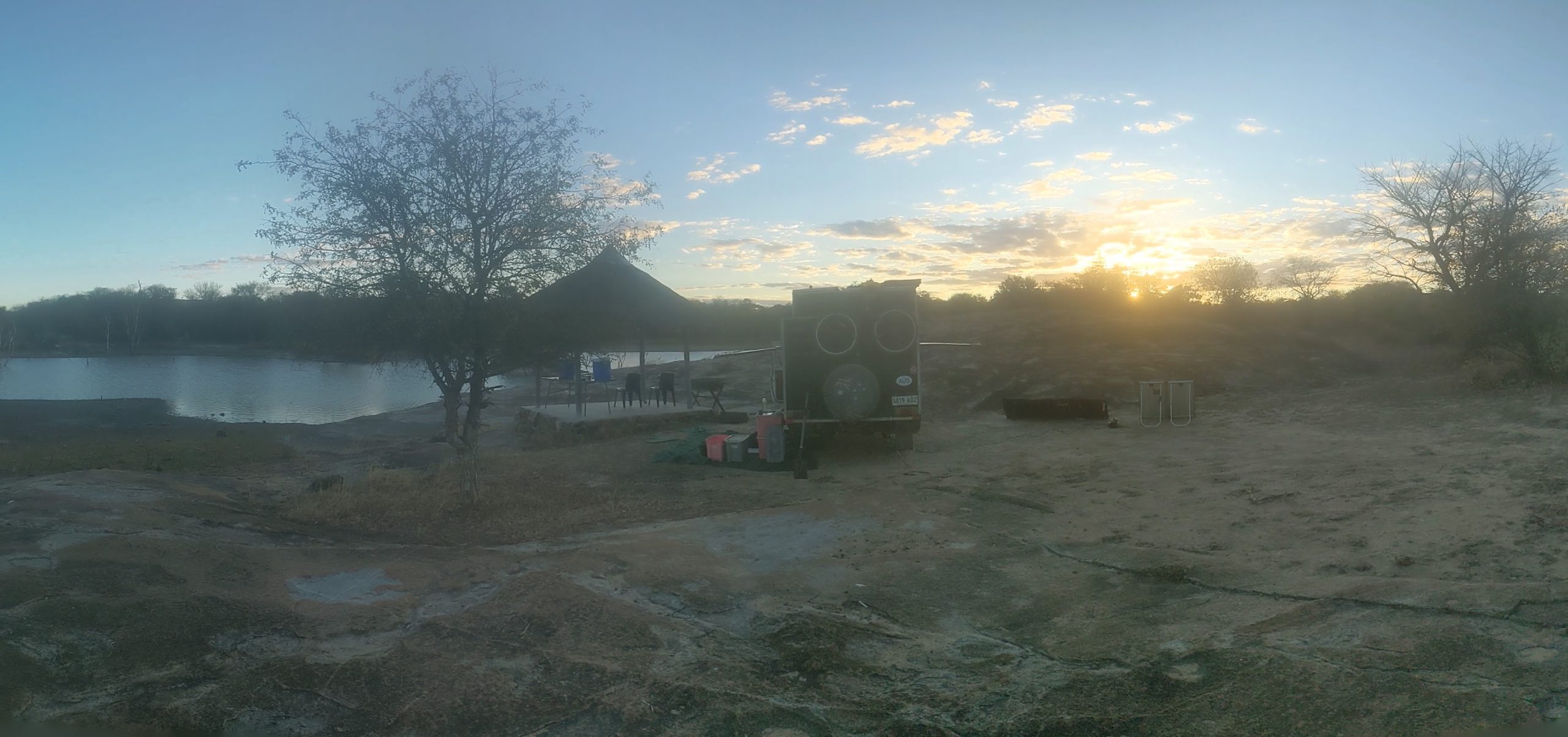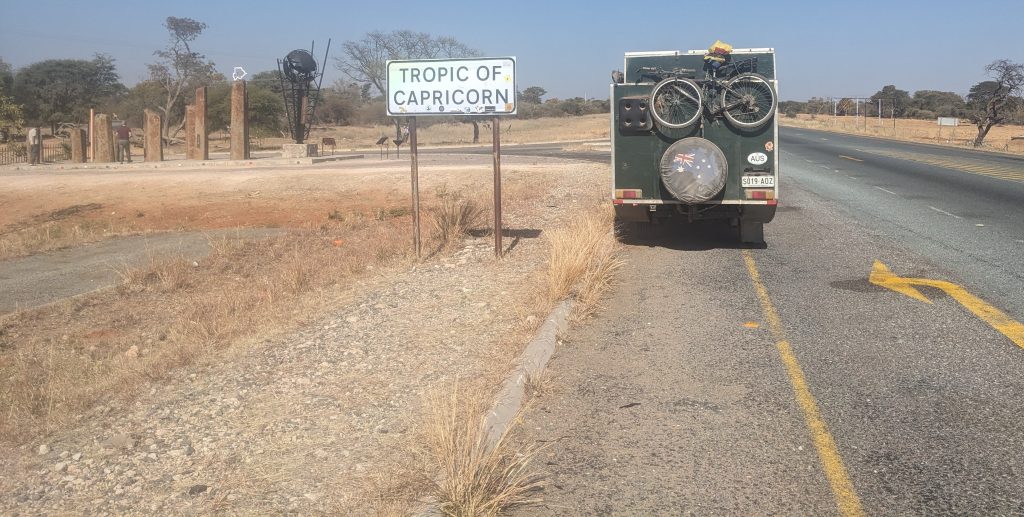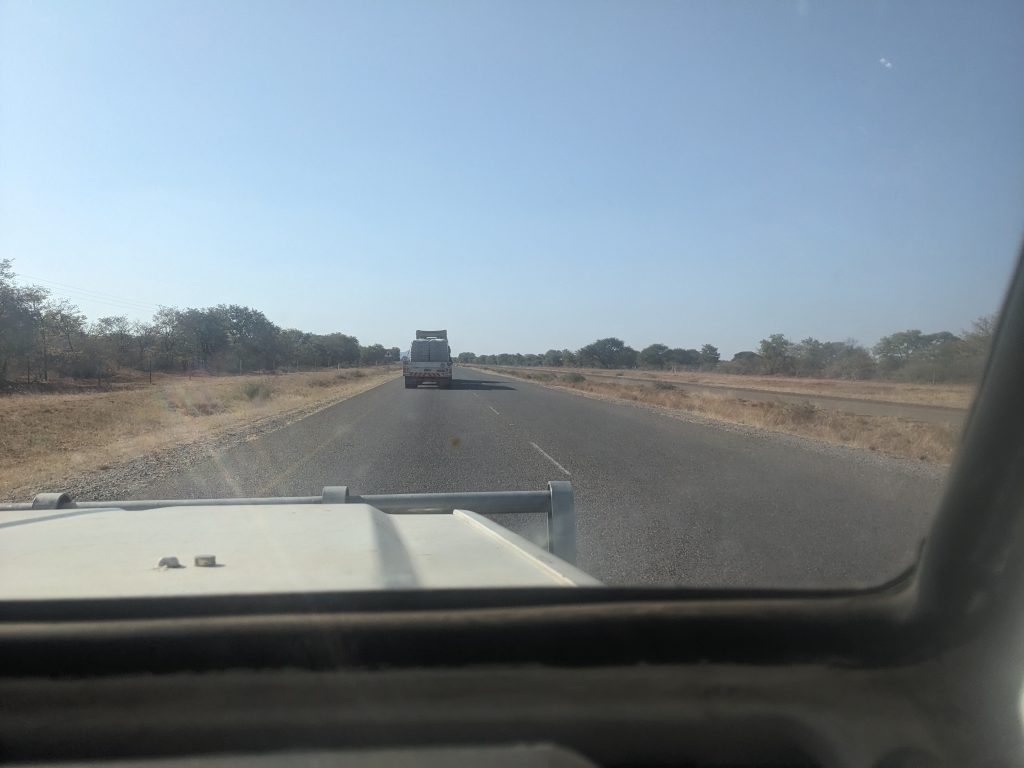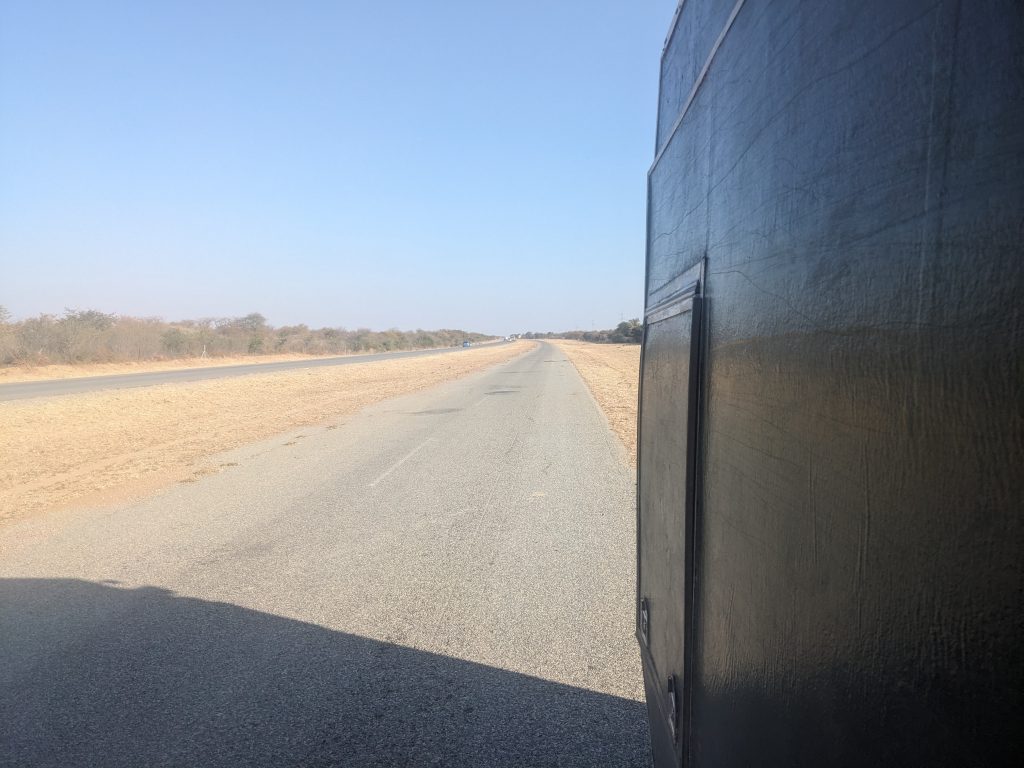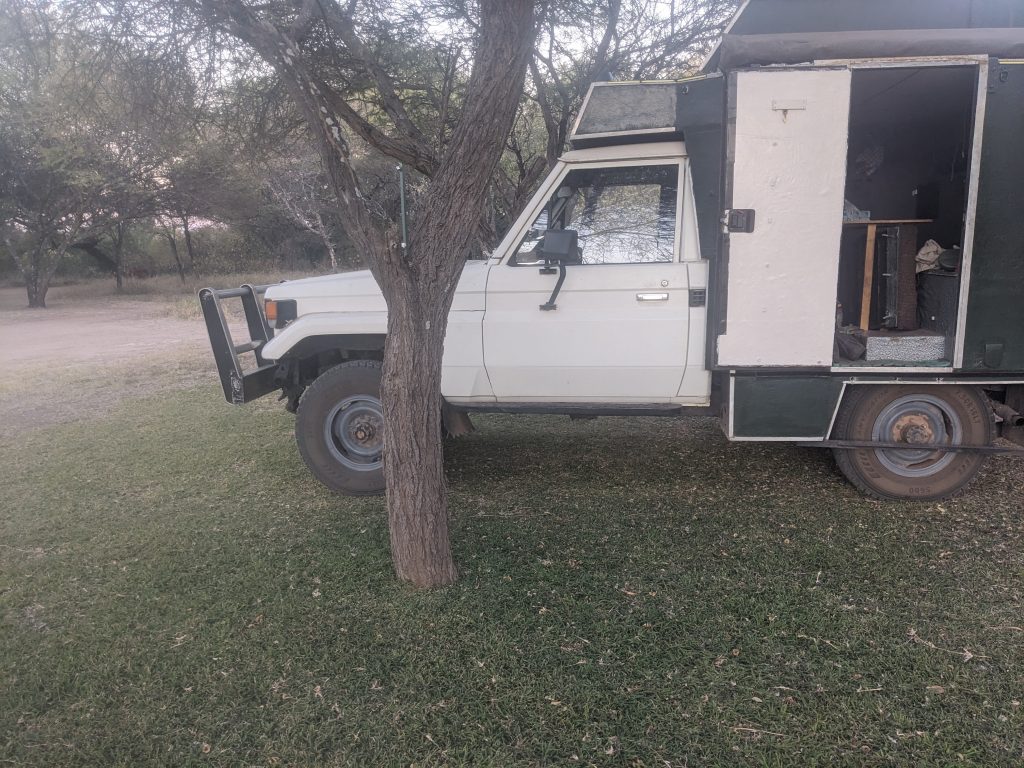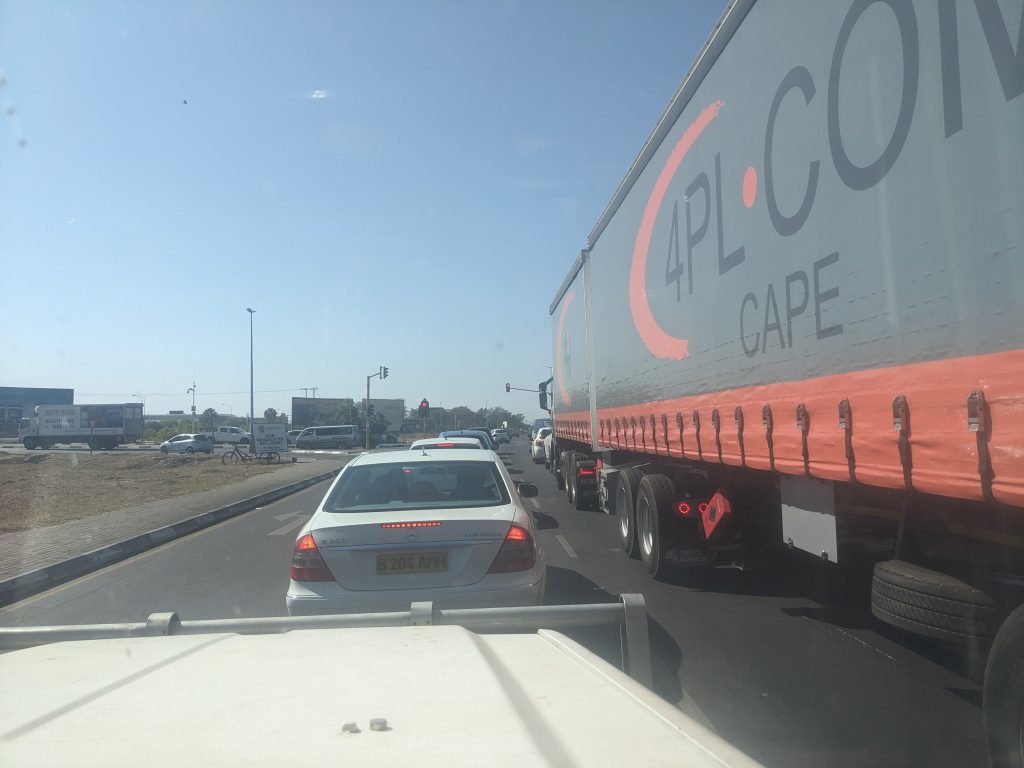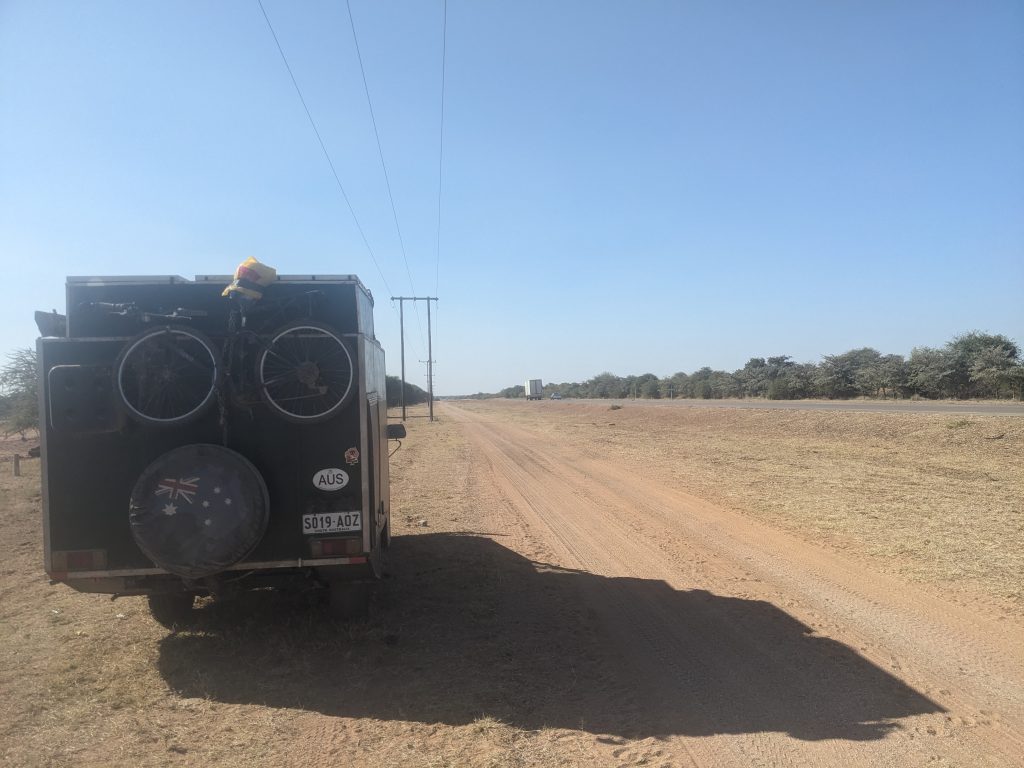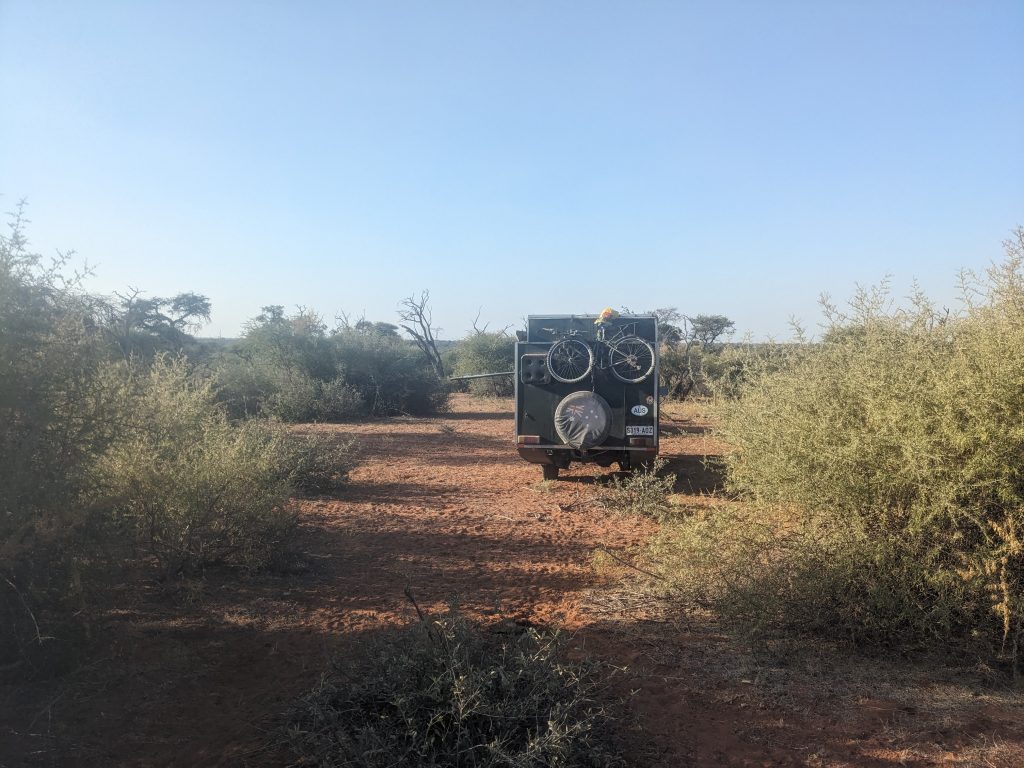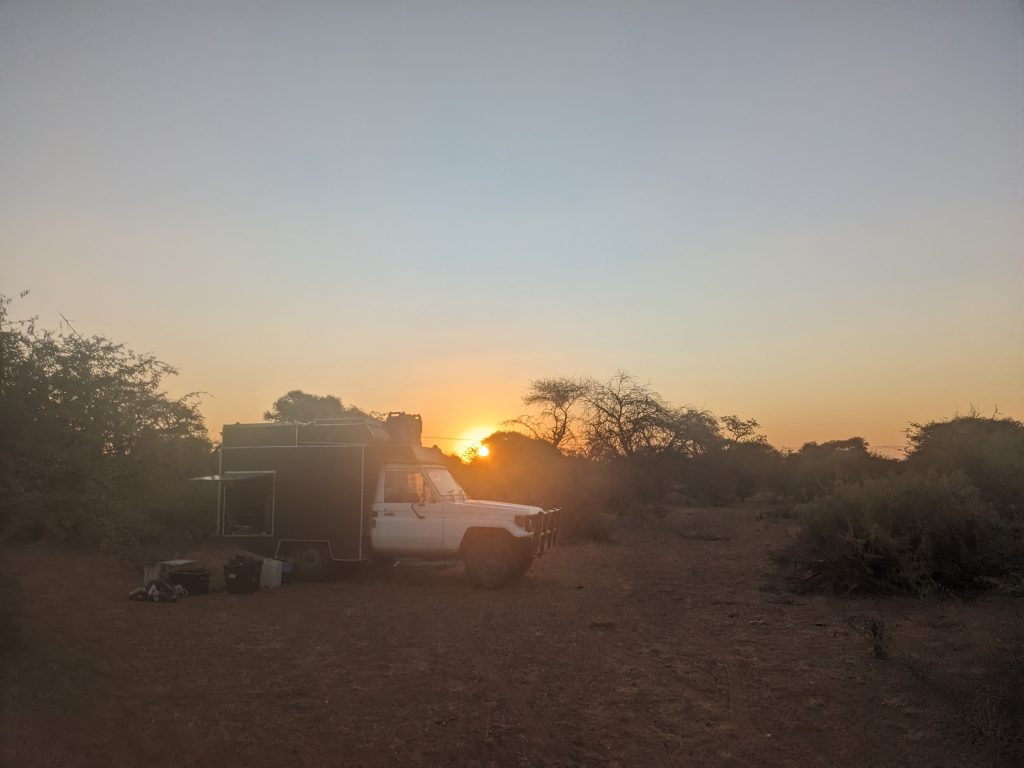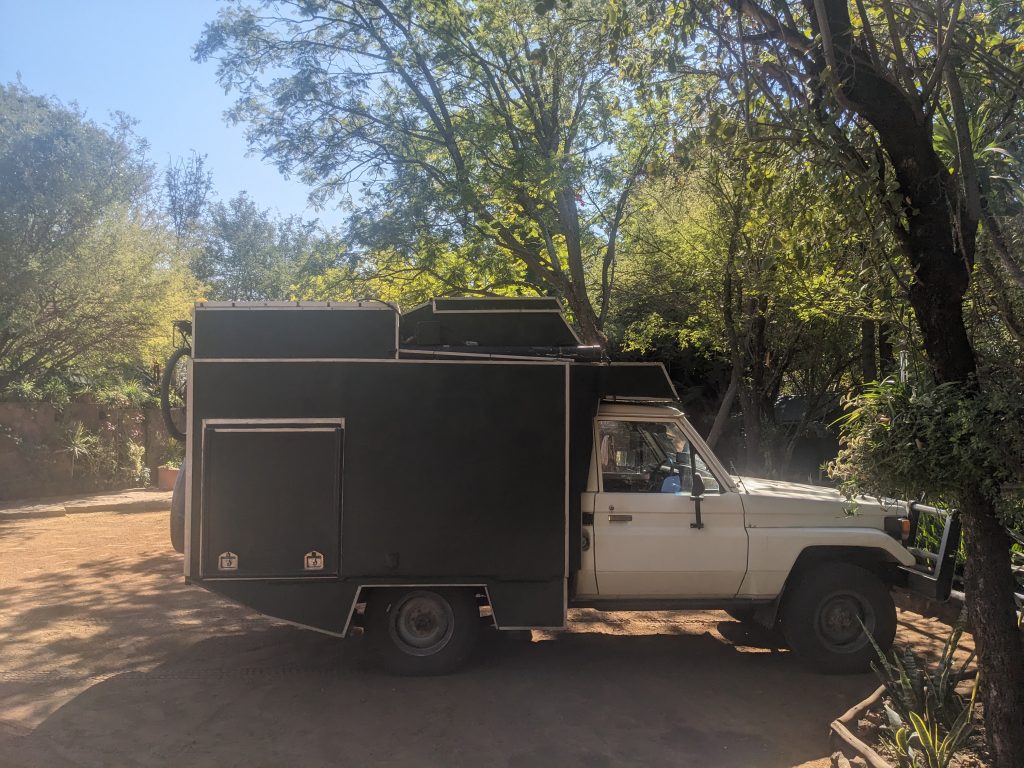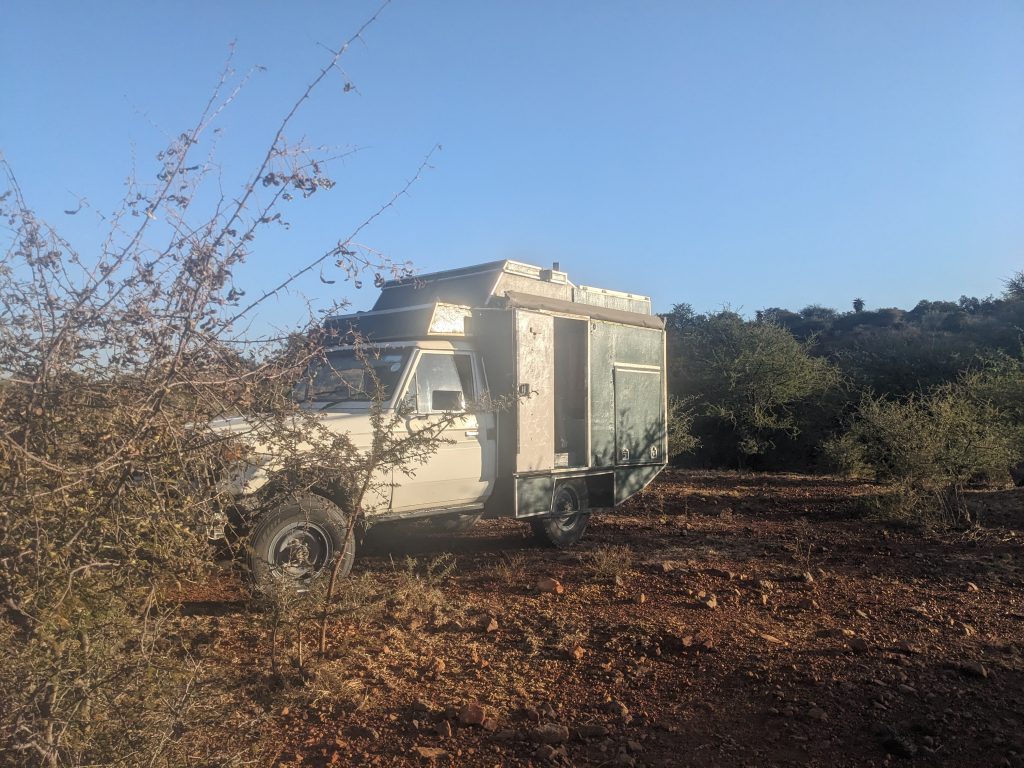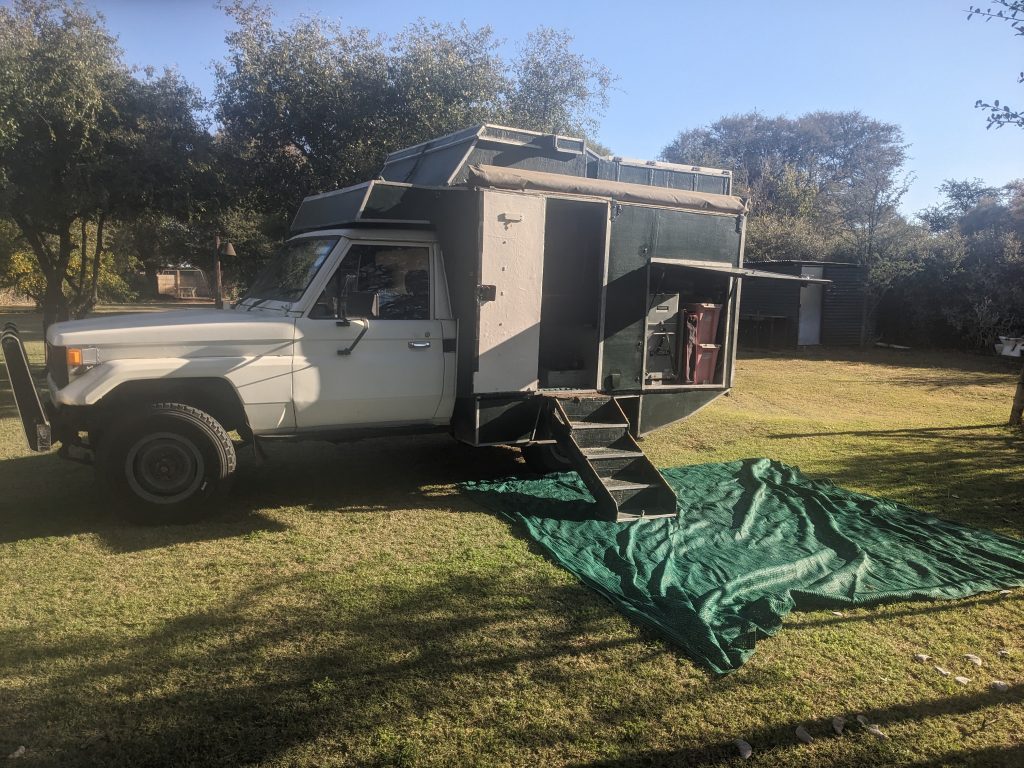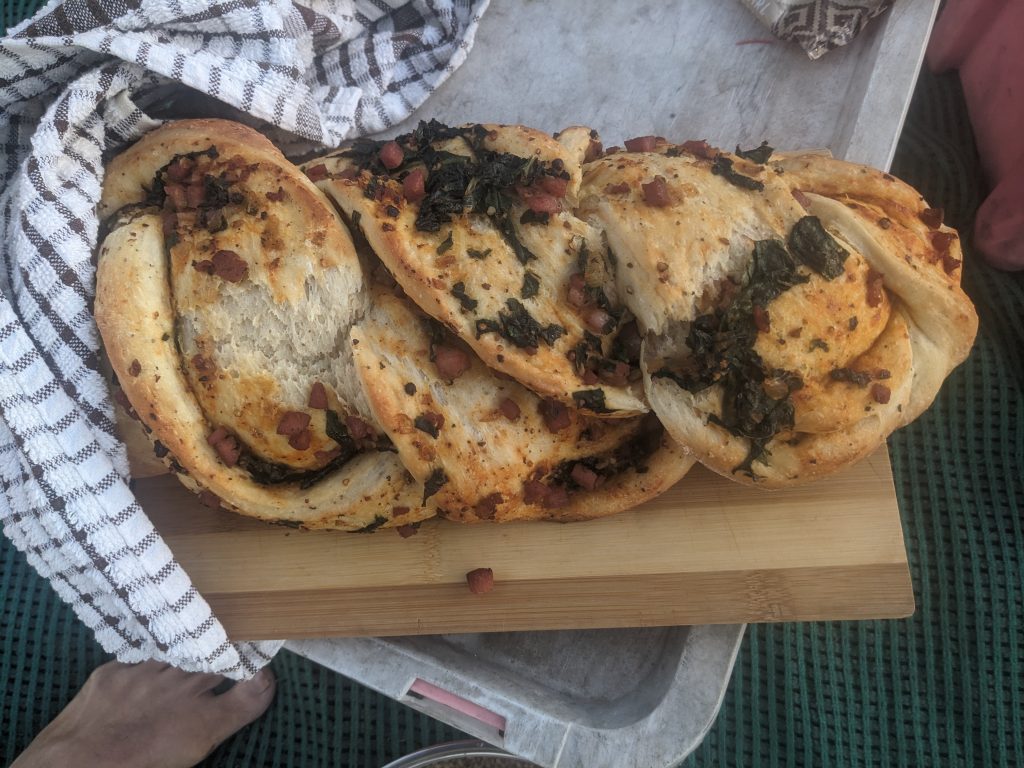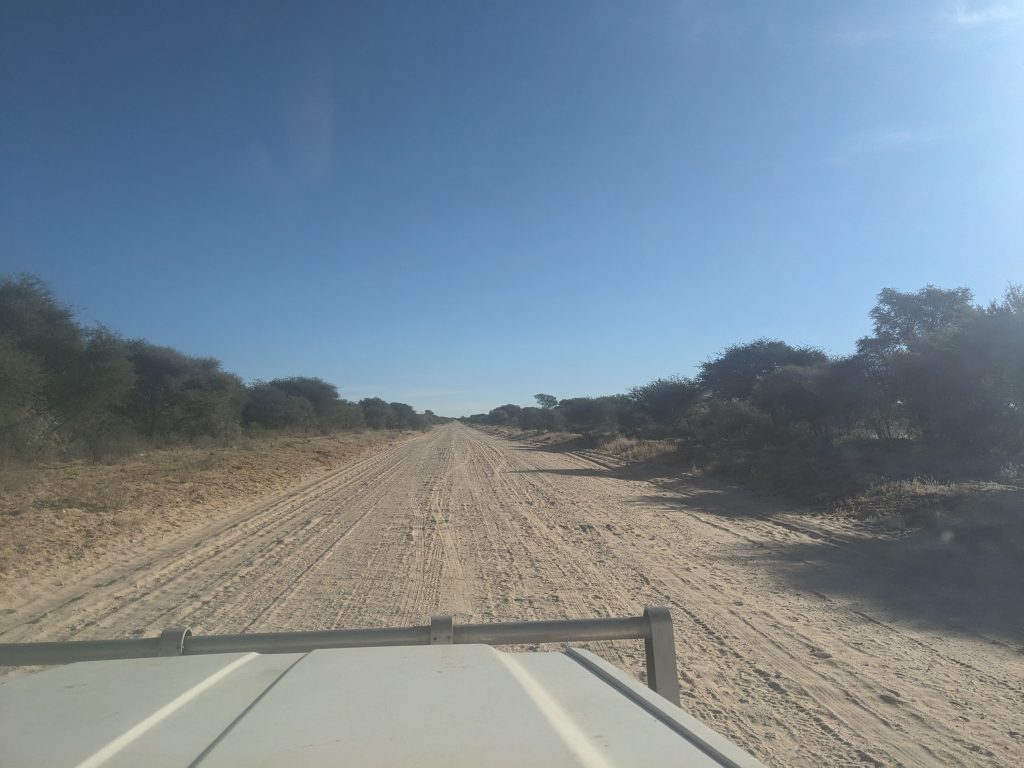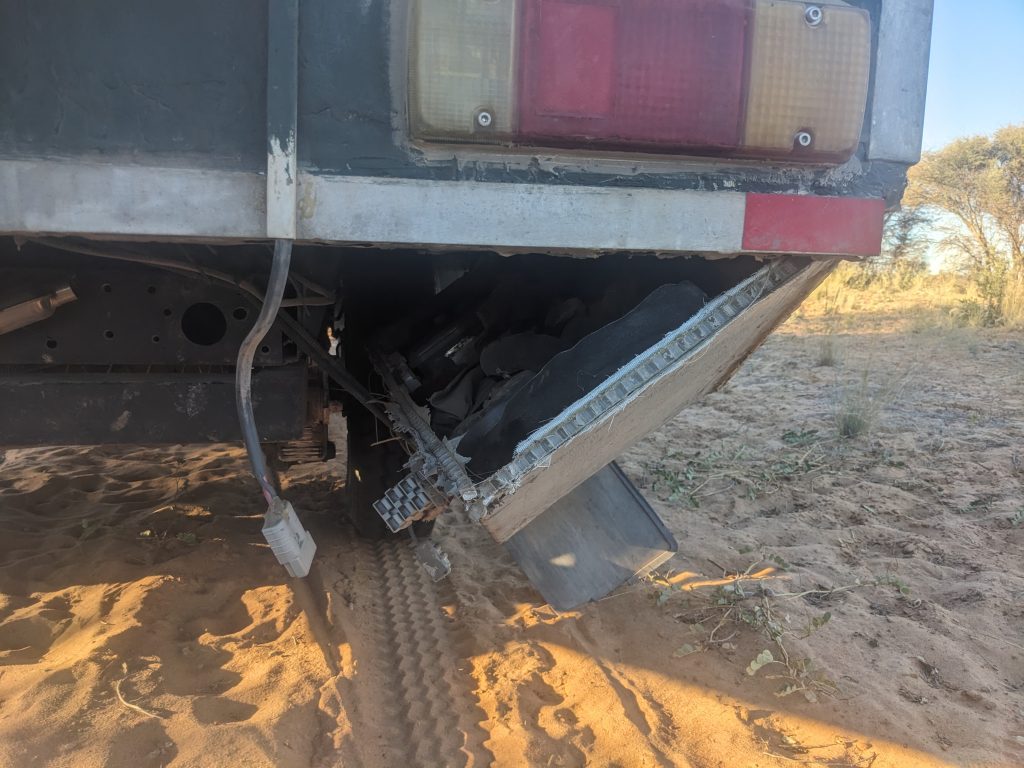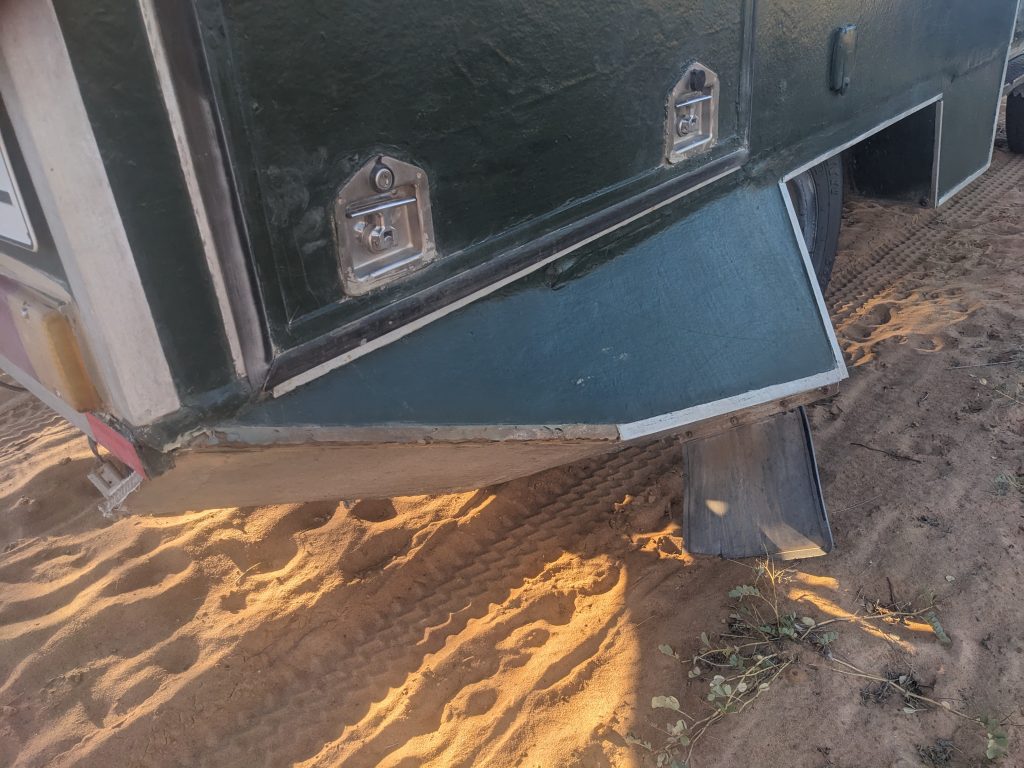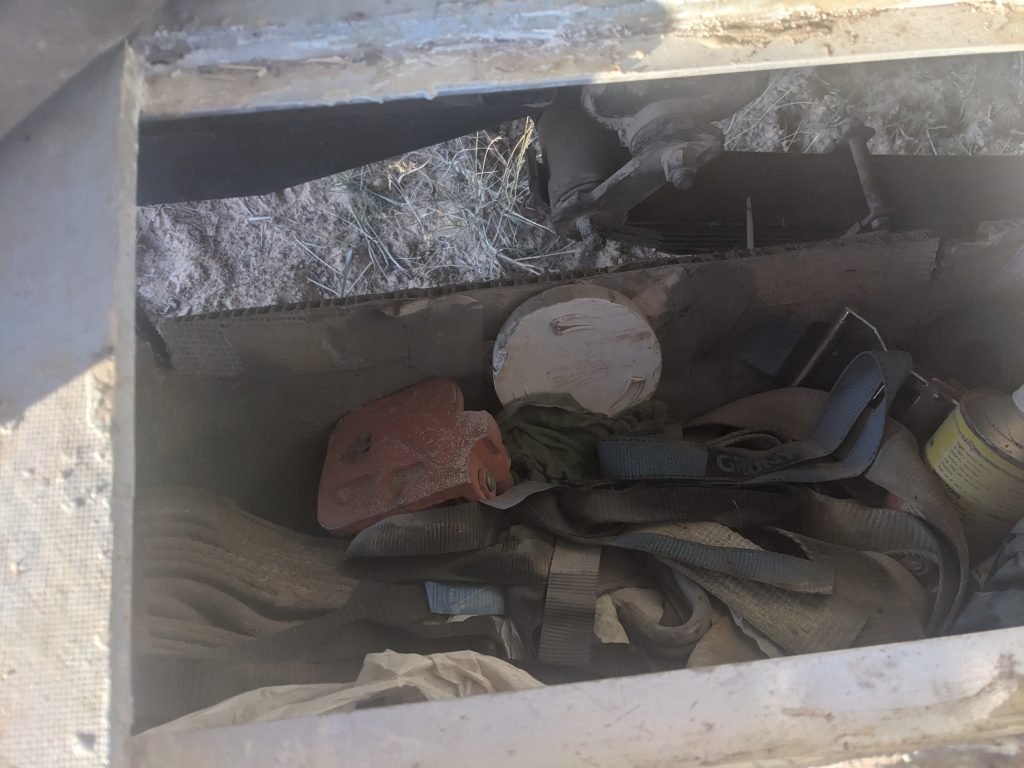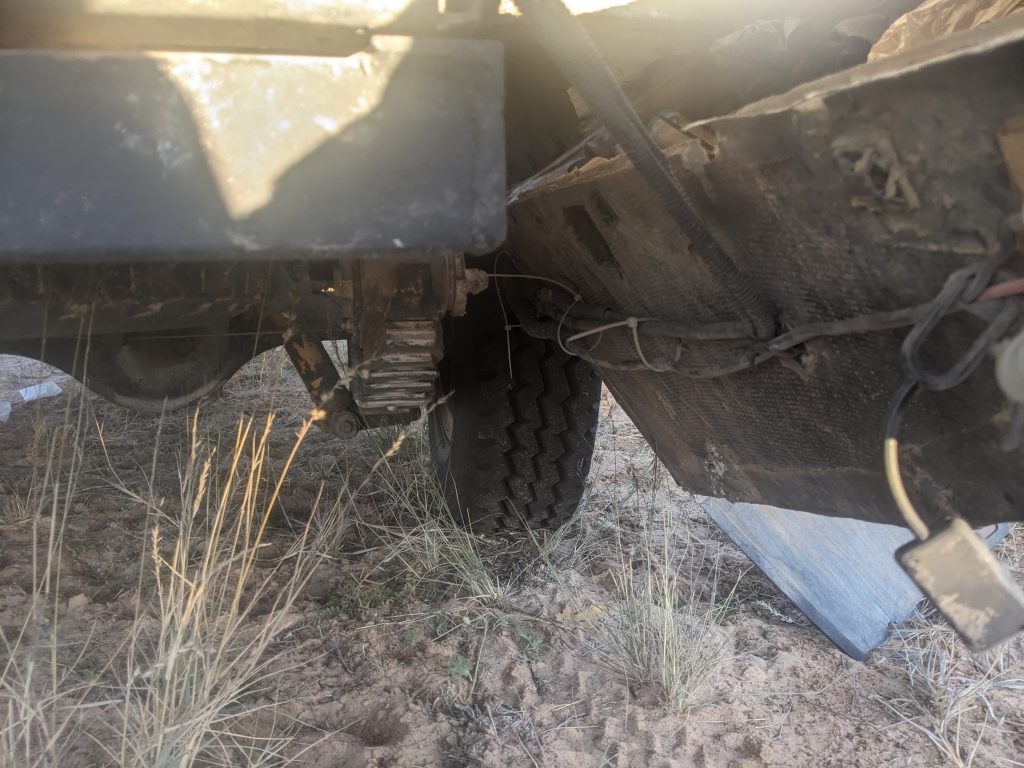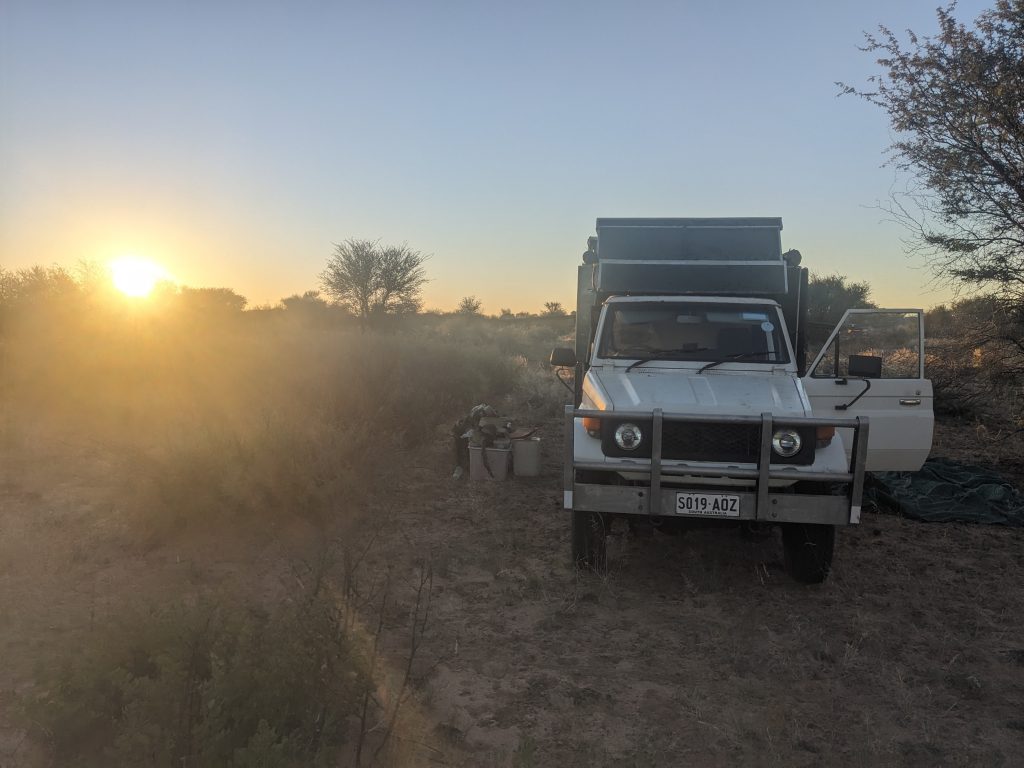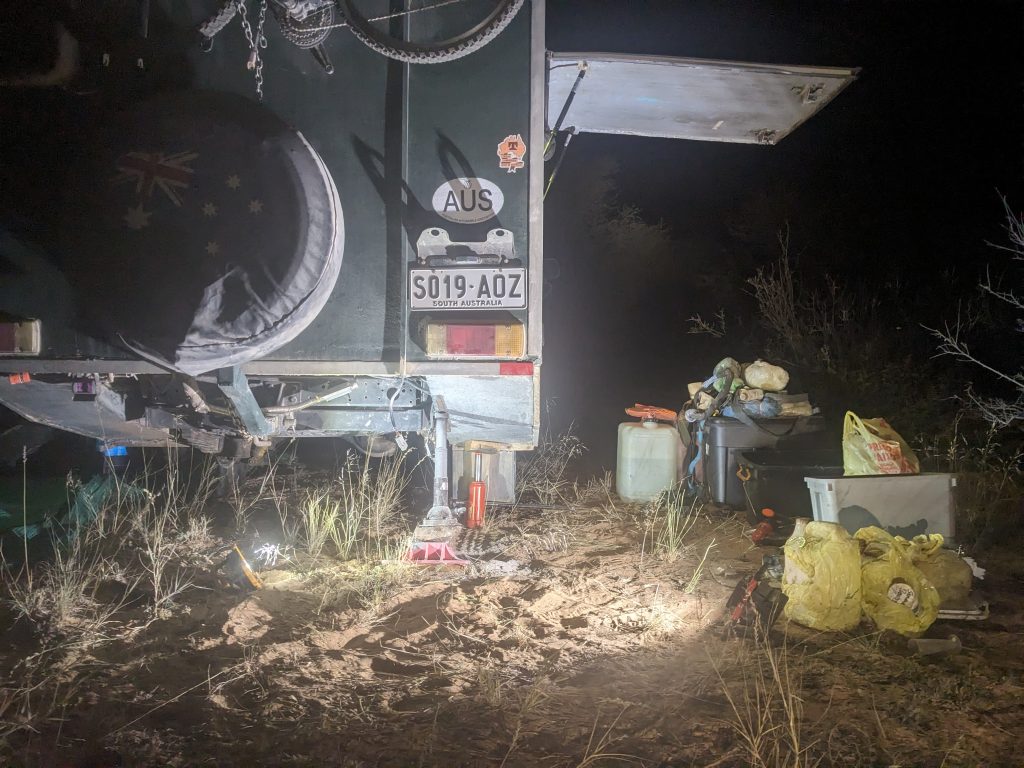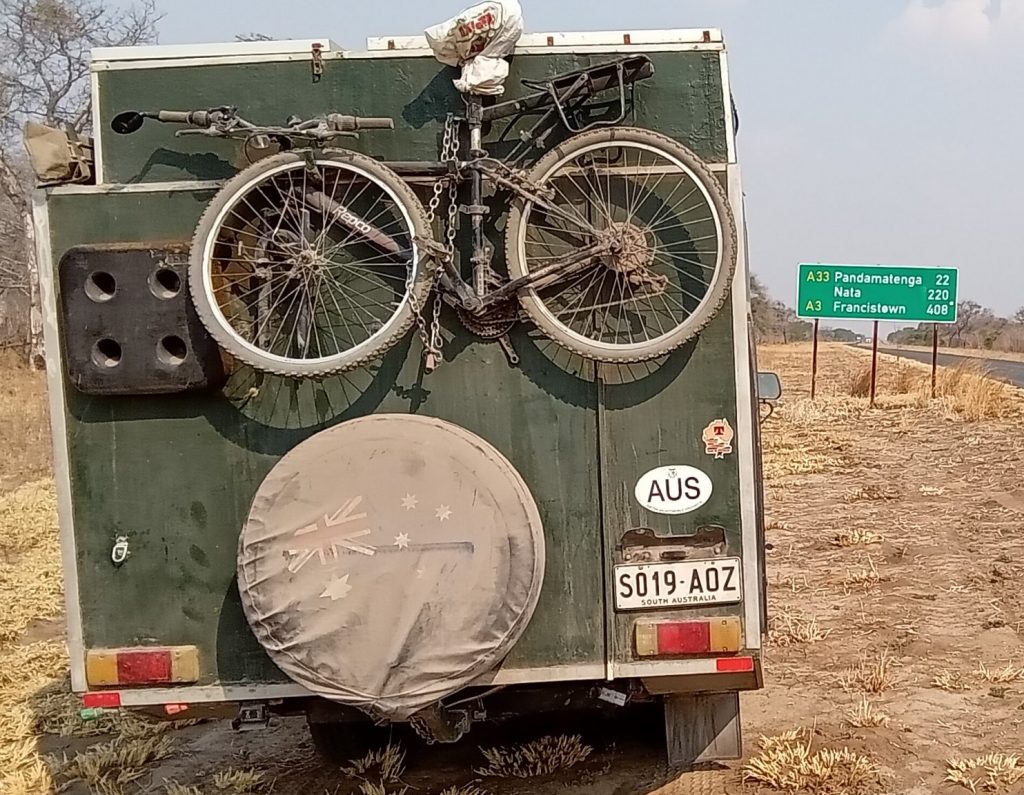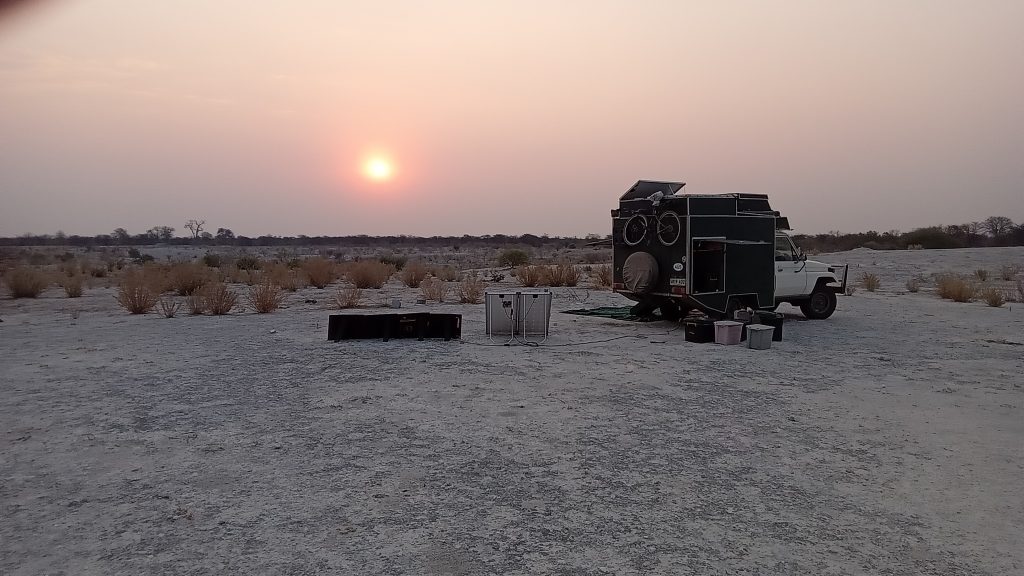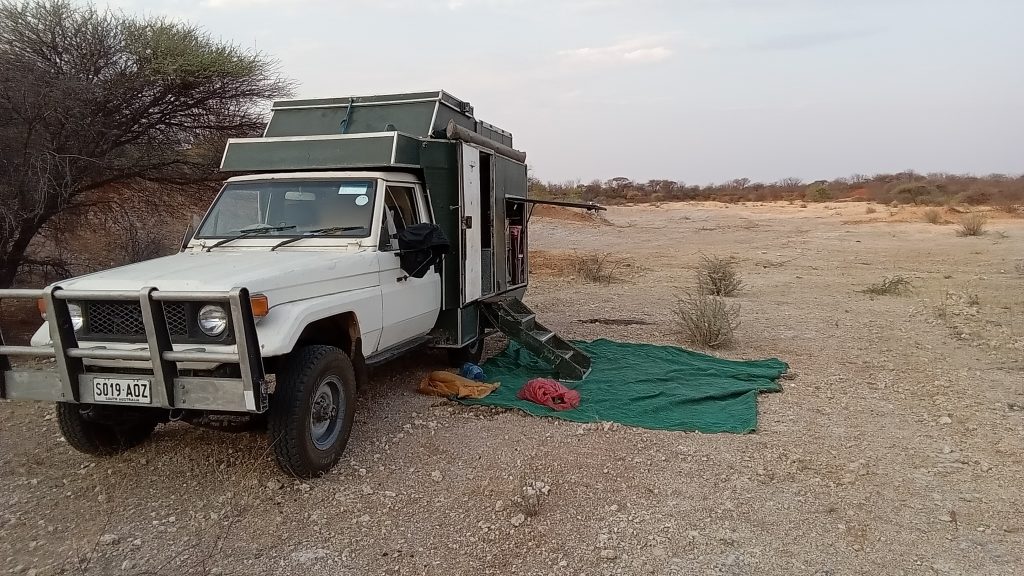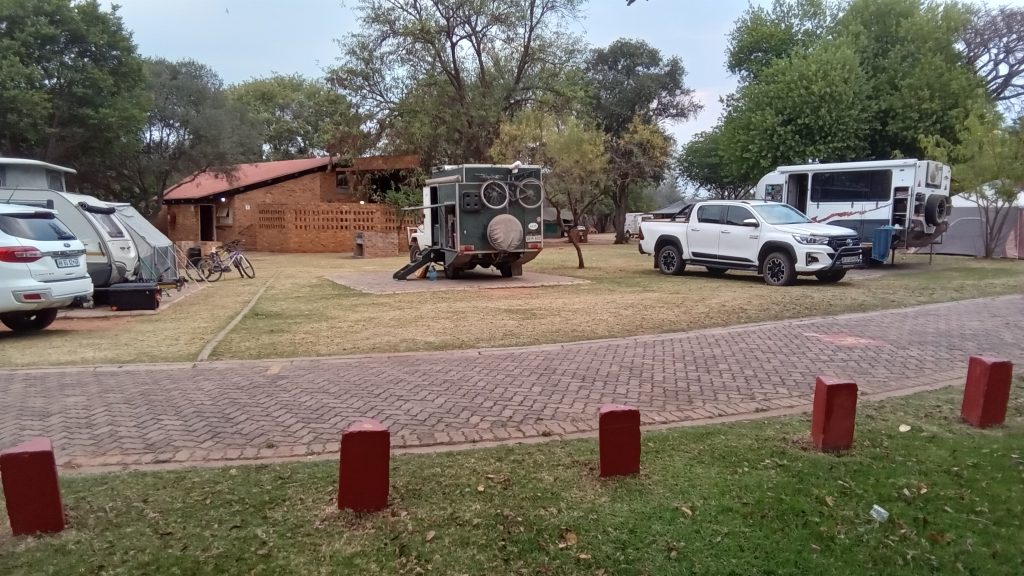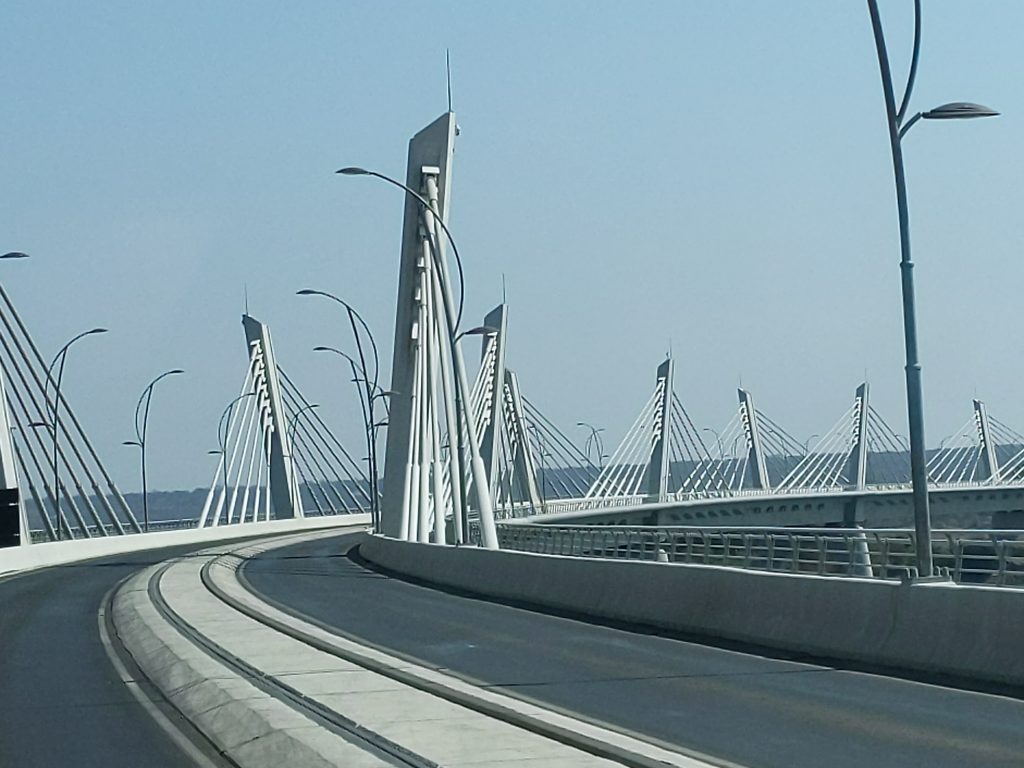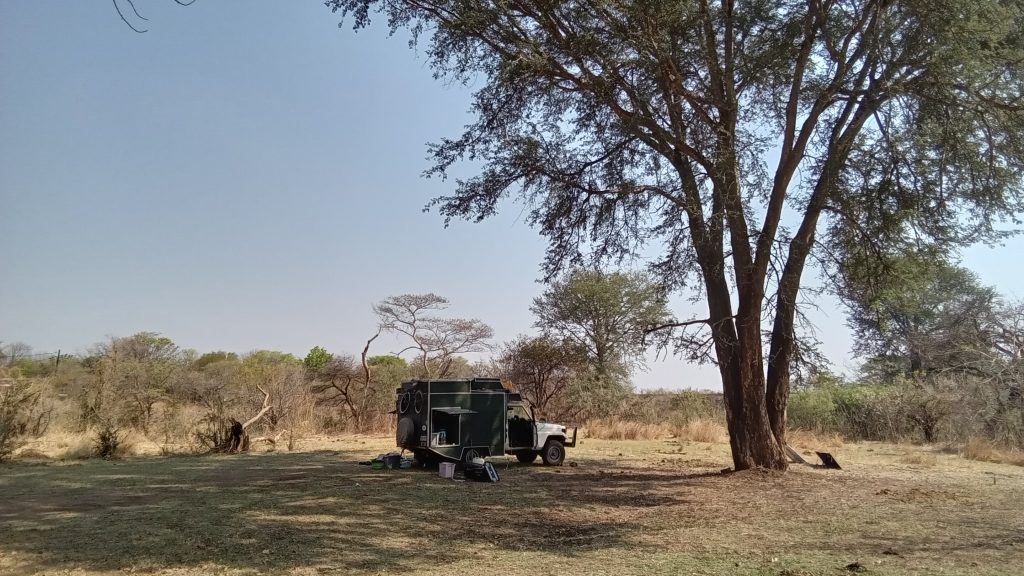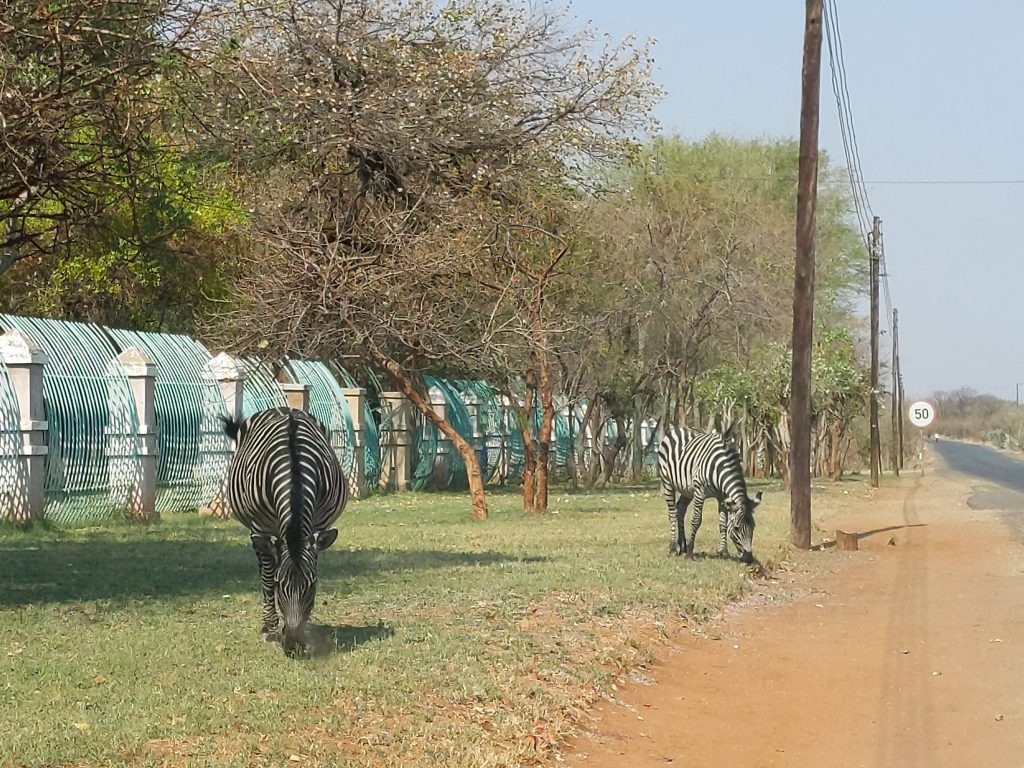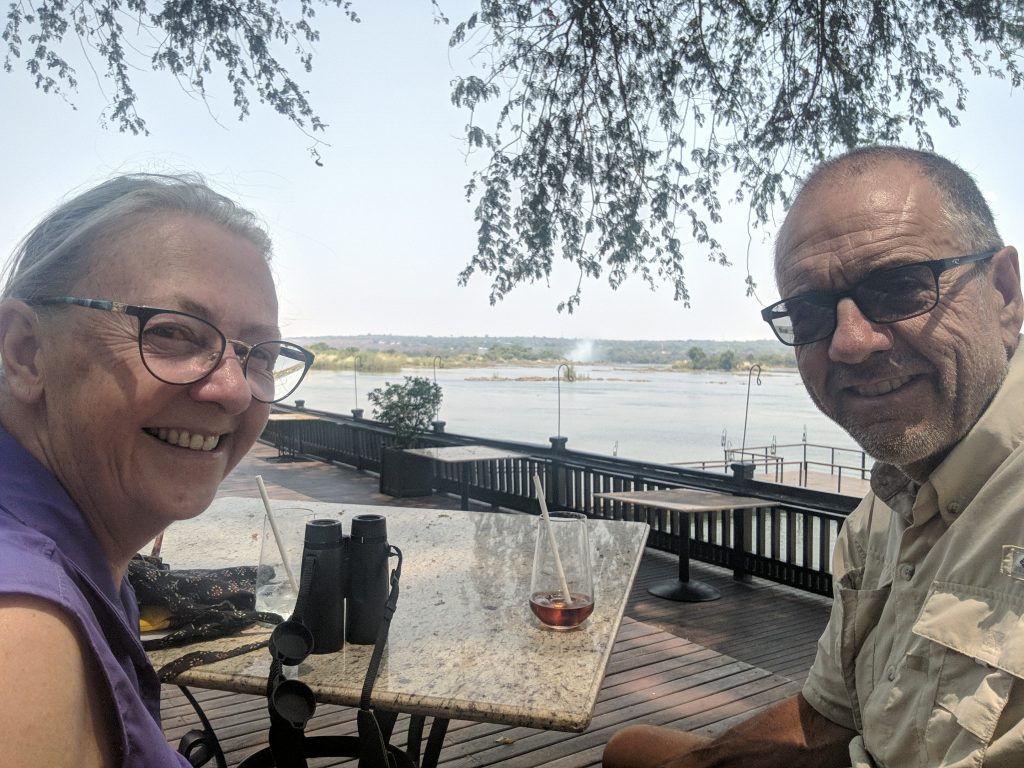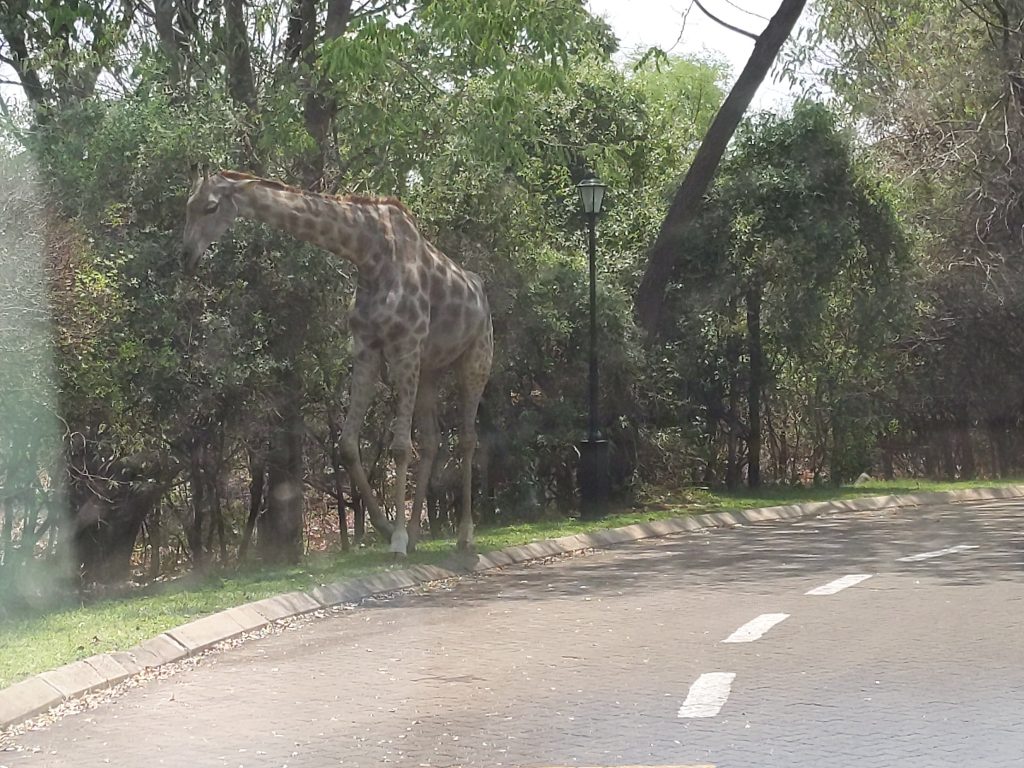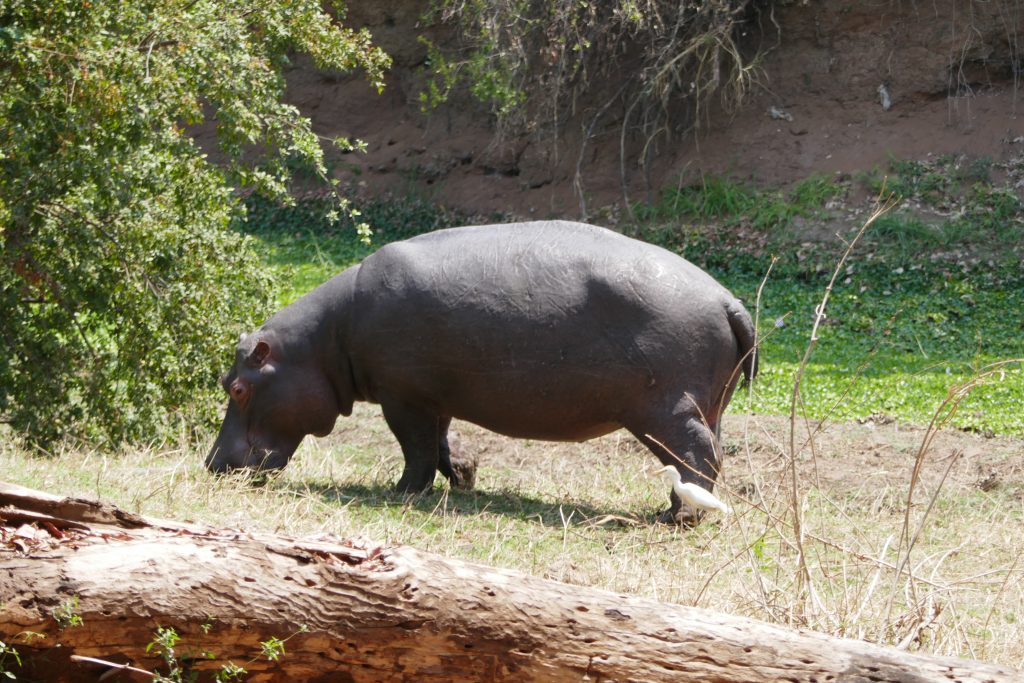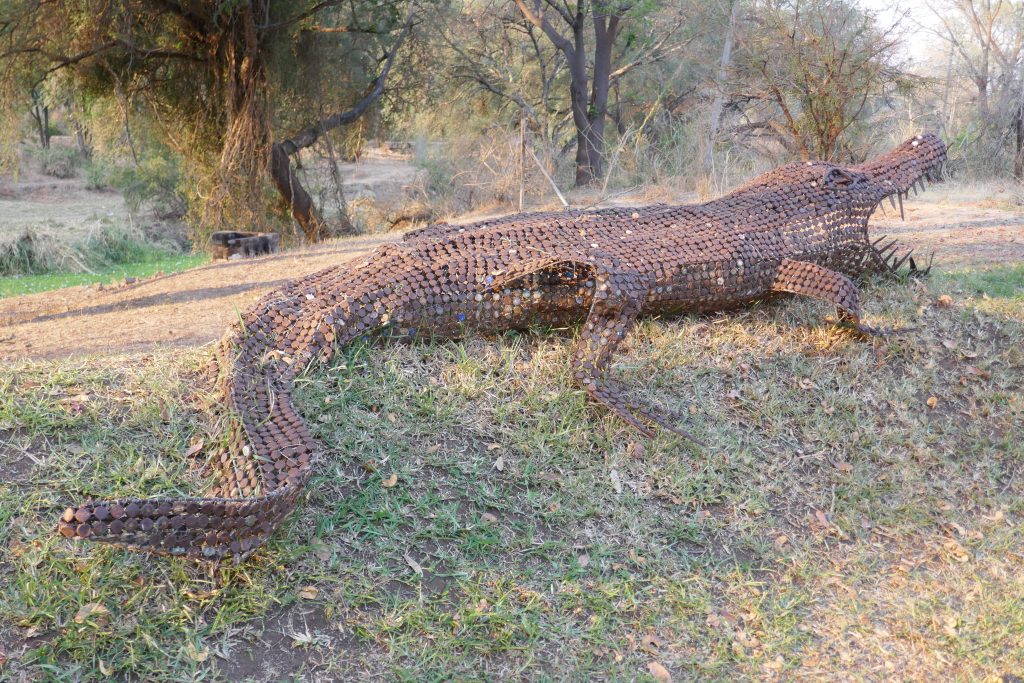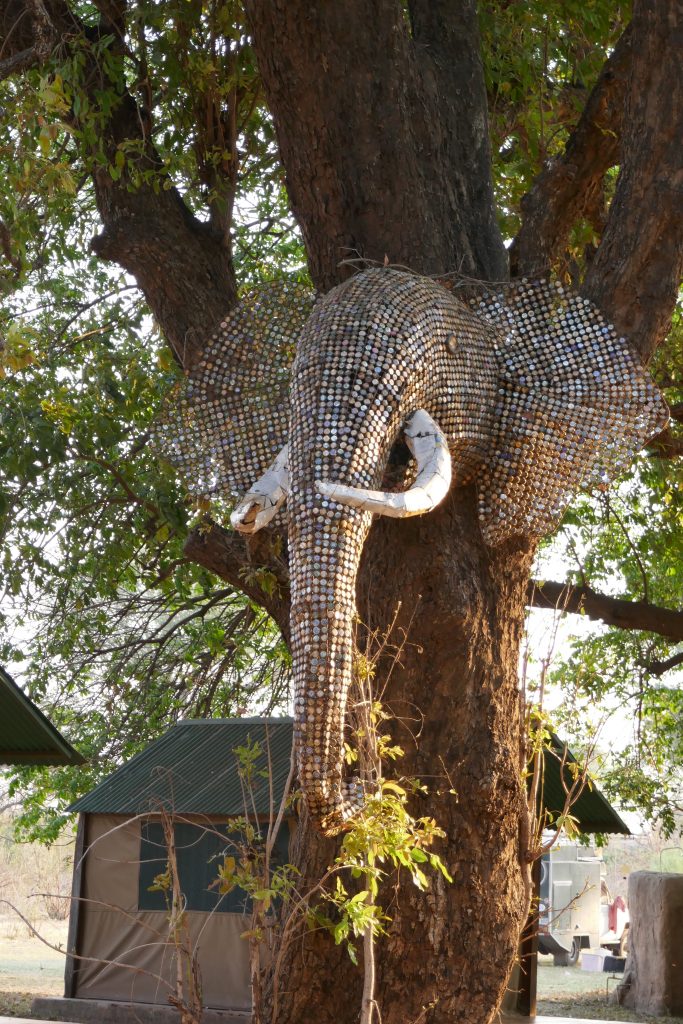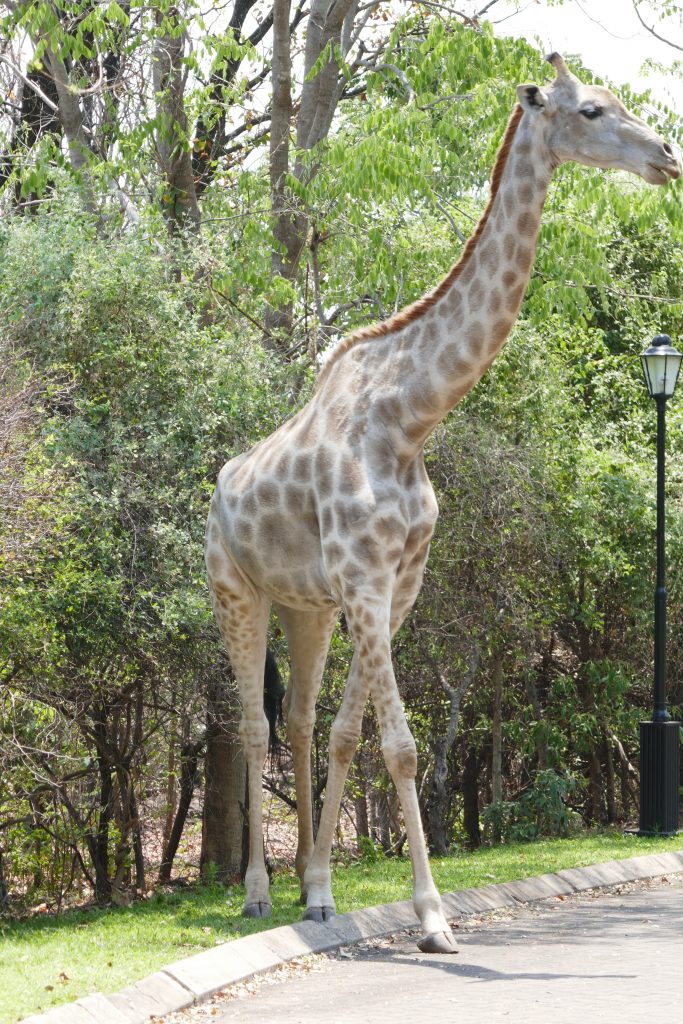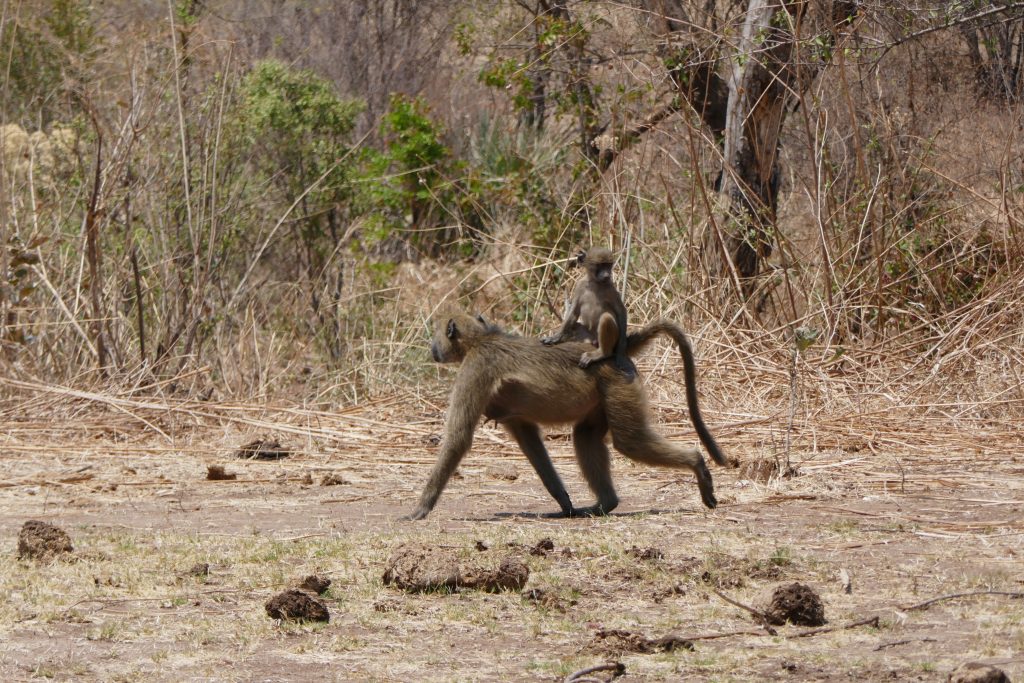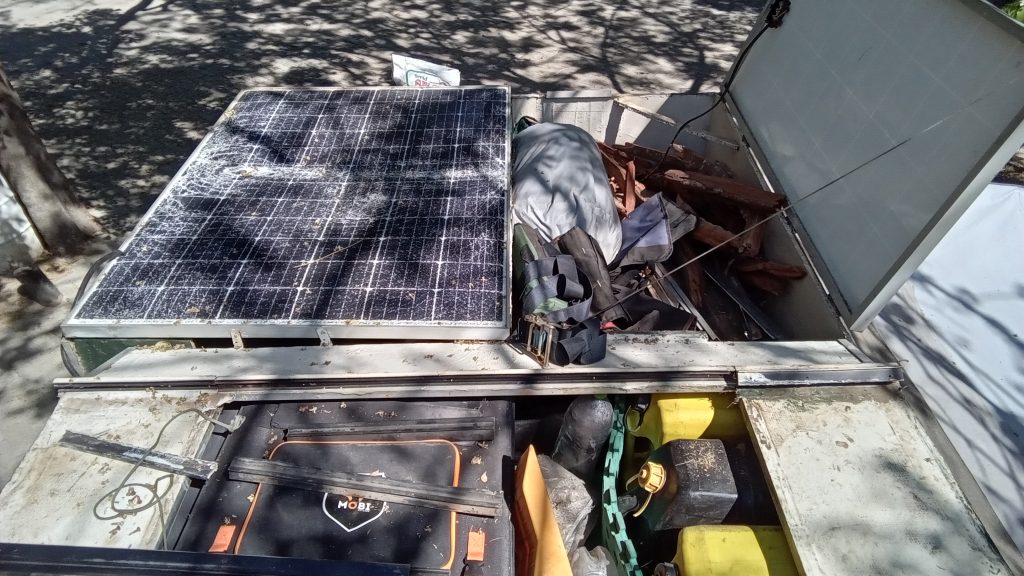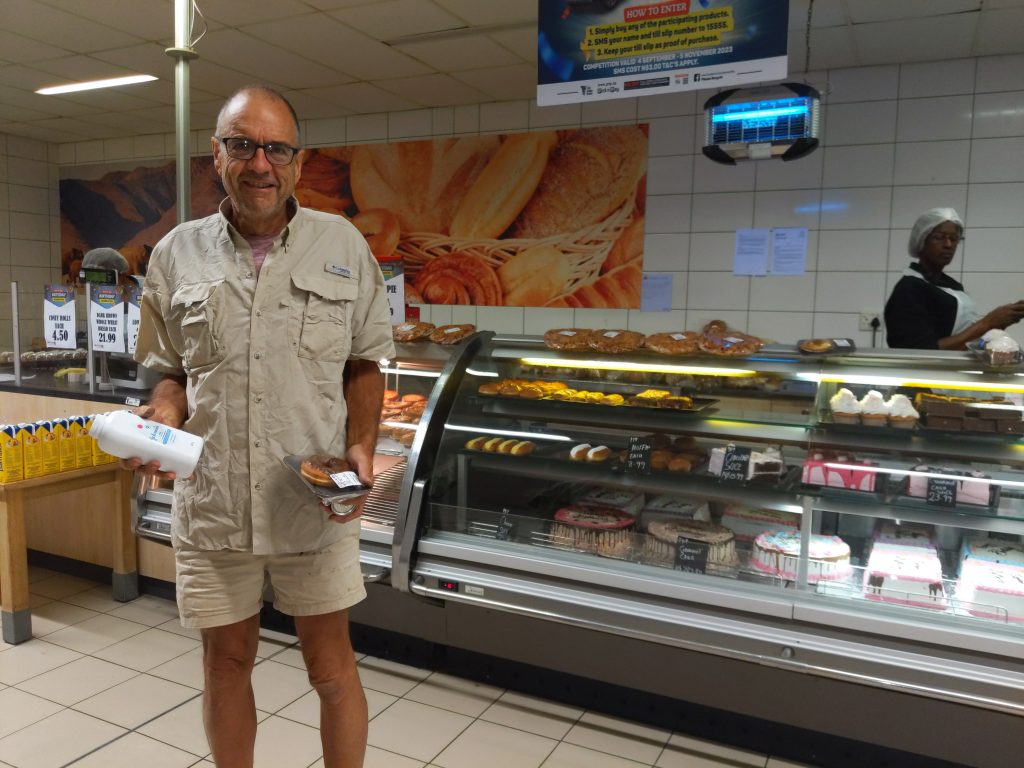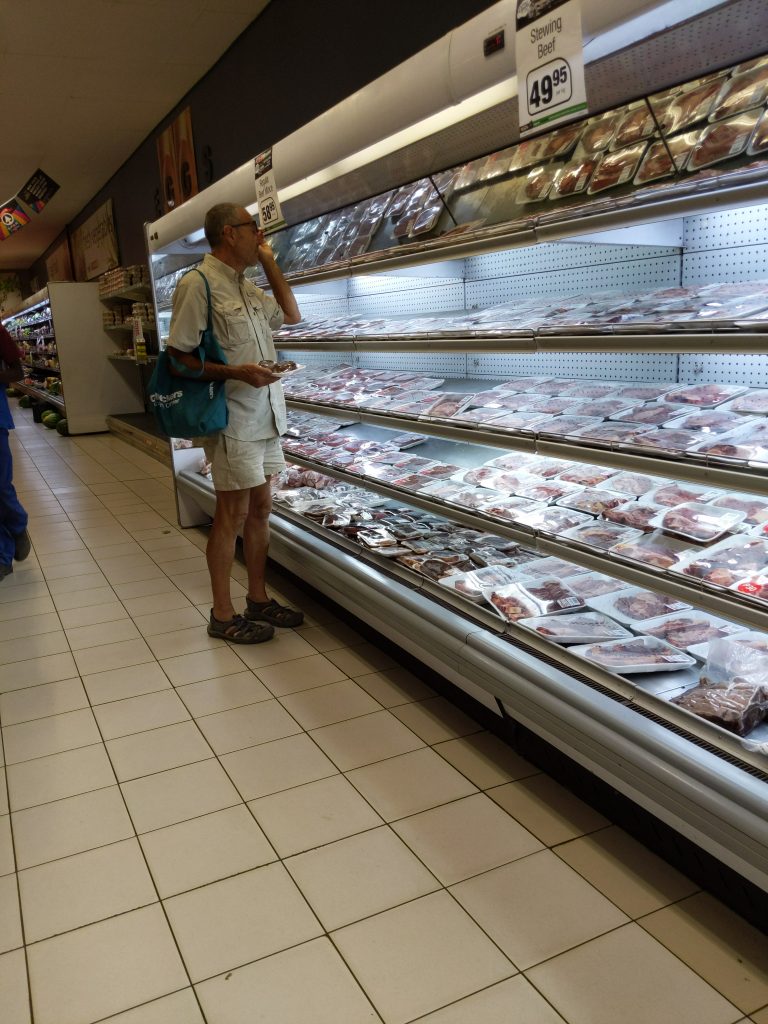I spent 3 nights at Tantebane Game Ranch. The first night it was packed with a large group of South Africans travelling together. When I woke up the next morning, they were all packing up and left, leaving me alone.
I did a final fix on the broken storage box, plus some other fibreglass fixes. I did some washing, some gluing and fixed some electrical things. It was nice to stay put for two days straight.
On Wednesday morning I set off for the Zimbabwe border. I stopped at the last servo in Botswana to squeeze as much diesel in the tank as possible. Then I exited Botswana, all very simple and straight forward.
It was then the unknown of the Zimbabwe border. I got through immigration in about 30 minutes. I was handled by three different staff and paid $30USD for a visa with my crisp new $USD notes. Then it was off to customs. I had done a eTip on line the previous day. This seemed all OK. I was told to pay $50 USD at the payment counter and given an invoice to take. I do that, thank the guy and go back to the car. First checkpoint they ask for my TIP (temporary import permit), and I show them my reference number for my eTIP, and they are fine with that and I head up to the next checkpoint. The next guy says I don’t have the right stamp on one of the pieces of paper, and I have to drive back and get it stamped. After asking about 3 different people I finally get the right stamp. I pass the next checkpoint, but I have to see two guys in a hut who are eating lunch. I see them and without even glancing at my wad of papers they say I am fine. I then go to the next checkpoint. They say I have to go and see the guy in a different hut. He says I don’t have a printout of my eTIP. So I drive back again and see two different guys until I get to the original guy that I organised the TIP with. He hands over my printed eTIP which I should have collected after I paid. (Sort of my fault, I should have thought of that). Then it is back through the two checkpoints and the guy in the hut, and finally I can leave, after about two hours.
Then its the drive to Bulawayo about 13km away. I get waved through one police checkpoint. I pay $4USD toll at the toll booth about 100km down the road. Outside Bulawayo I hit another Police checkpoint, and they pull me over. After the questions about where I am going etc, the (rather large) Police woman asks me for money because she is hungry. I eventually give in and give her the $1USD note I got as change from the toll payment.
I got into Bulawayo, stopping at the Zonkizizwe shopping centre for a sim card and some supplies. I then contacted Karen, and briefly met her at her lodge, before heading the the Hillside Conservancy for a campsite for the night.
